Lakers' Randle, Russell enter NBA season facing a tricky purgatory
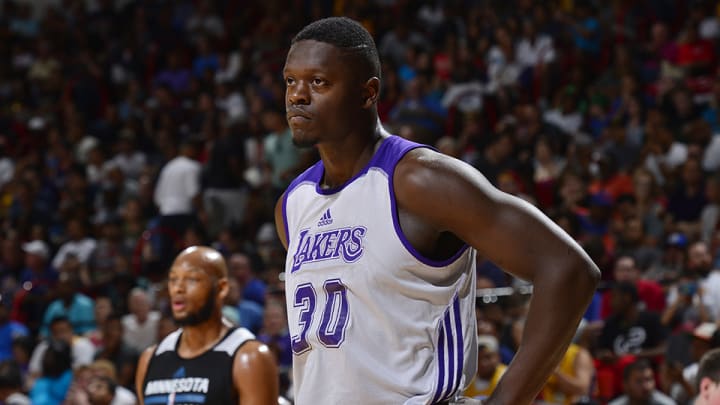
LAS VEGAS—With his first Summer League action less than an hour away, Lakers forward Julius Randle walked deliberately through the Thomas & Mack stands, as lines of young fans formed like comet trails behind him and sections of gawking adult fans rose to their feet respectfully, as if he was presenting the flag. A few days later, Lakers rookie guard D'Angelo Russell sat at a table signing autographs, with overwhelmed staffers going up and down letting the waiting crowd of hundreds know that there would only be time for signatures, not selfies.
There's no better place than Summer League to get in on the ground floor of a rebuilding effort, and this week's action has made it abundantly clear that Lakers fans are ready for the future. What's not quite as clear: Are the Lakers' future building blocks ready for primetime?
The event's opening weekend set attendance records—drawing more than 12,000 fans on Saturday and 11,000 fans Sunday—thanks to the anticipation surrounding L.A.'s lottery pick duo of Randle and Russell. So many Lakers fans filled up the Thomas & Mack's lower bowl that the public address announcer asked the general admission audience to squeeze together to free up seats for late-arriving fans, and arena workers removed curtains covering the upper decks so that the usually empty sections could be used as overflow seating.
- MORE NBA: Mudiay debut bodes well | Porzingis quiets doubters
Although the Summer Lakers were welcomed to the court for their first game with a hearty standing ovation, the reception hasn't always been positive. Following a five-point first quarter stinker against the Knicks, the Lakers were loudly booed as they returned to their bench. Through Wednesday, L.A. had a 1-3 record, with the only victory coming against Philadelphia, who is winless in Las Vegas. Both Randle and Russell have struggled more than they have thrived this week, and Wednesday's last-second loss to Dallas ended in disheartening fashion for the pair. Randle was unable to get off a potential game-winning before the buzzer sounded, while Russell committed a crucial turnover with less than 30 seconds left.
The fans in attendance groaned at another loss, and media members chuckled loudly at coach Mark Madsen's final play design, which produced a 40-foot heave for Randle, who made only three three-pointers during his entire freshman season at Kentucky. Madsen immediately rushed to the defense of his two prospects, using his post-game press conference to throw himself under the bus for the final play and his misuse of timeouts.
"I was trying to get a deep pindown, to get the ball to Julius," Madsen explained, rushing through the words. "With 1.4 [seconds], have him make a play. Bad play. Bad play. I told that to Julius after the game. Julius did everything he was supposed to do. I drew up a bad play. ... The late-game clock management was very poor by myself. I want to give the players more and better."
Deron Williams signing helps Mavs cope with current circumstances
Of course, a botched play design during an offseason scrimmage isn't the end of the world. But Madsen's over-enthusiastic self-immolation hinted at the impatience his franchise is facing after two straight lottery trips. Lakers fans expect to win, always, even if two of their key drivers are 20 (Randle) and 19 (Russell) years young. This week's takeaway: it's a good idea to pump the brakes.
The slow go was part of the plan for Randle, who continues to work back from a season-ending leg injury suffered on opening night. In Las Vegas, he has been limited to 20 minutes per game and he was held out on the second night of a back-to-back. His numbers—11.7 points, 3.7 rebounds, 2.3 turnovers, and 39.3% shooting—haven't been particularly pretty. The good news: Randle hasn't played with obvious hesitancy after the injury, he hasn't suffered a setback or appeared to drag because of his leg injury, and he told reporters Wednesday that the minutes limit is "killing me" because he wants to show more.
Nevertheless, the lost season has put Randle's progress on pause. The strength of his game is his offense, and there he remains very, very predictable. His preference for directly attacking the basket is obvious, his reliance upon his left hand is even more obvious, and his finishing ability has been lacking. "I've got to be better," he said after going 2-for-8 in the loss to the Knicks. "End of story."
Randle's comfort with the ball in his hands and natural scoring drive help him draw lots of contact, and he's been a regular at the free-throw line. But for much of this week, he has been a one-tricky pony, albeit a very muscular and determined pony.
"Everything he does is going left," said one NBA talent evaluator in attendance on Wednesday. "If he drives right, he just spins back left. He looks to drop-step left every time. He's had a few dunks but he doesn't consistently get above the defense to finish. He's used to being the strongest guy on the court and bullying his way to lay-ups."
Smart NBA-level defenders will easily gameplan for this version of Randle, setting up to take charges, ignoring his fakes and spins to contest his shots at the rim, and daring him to shoot from midrange. L.A.'s trade for Roy Hibbert also presents complications for Randle, as L.A.'s offense was already space-deprived. Hibbert's arrival ensures that Randle will be driving into clogged lanes against multiple defenders, without a reliable dump-off outlet when he collapses the defense.
"If he stays on this track, there's going to need to be a transition where he shifts his mentality to become a valuable complementary scorer rather than the lead guy he has been," the talent evaluator continued. "He needs to develop more options or he will need to move back in line."
One obvious question here is how much freedom Randle will have to pursue life as a primary scorer in the short term. The Lakers have a host of high-usage players on the roster (Kobe Bryant, Nick Young, and offseason addition Lou Williams, among others) and their top backcourt options are inexperienced (Russell and Jordan Clarkson). That's not exactly a recipe for a loose leash.
Plus, Randle faces a possible positional identity crisis going forward because he's not built or wired to dominate as a traditional four. His ability to face up and drive make him a more natural spread four option, but his comfort zone doesn't reach out to the three-point line, which has become the default expectation for small-ball power forwards. To his credit, Randle understands that his jumper—even if it's just from the elbow—needs to get significantly better so that he can get to the basket more easily and set up a drive-and-kick game for his teammates.
"[My jumper] has to be a consistent part of my game," he said. "For me to reach my potential and be as effective as I want to be, it has to be a consistent part of my game. It's something I've been working on all offseason."
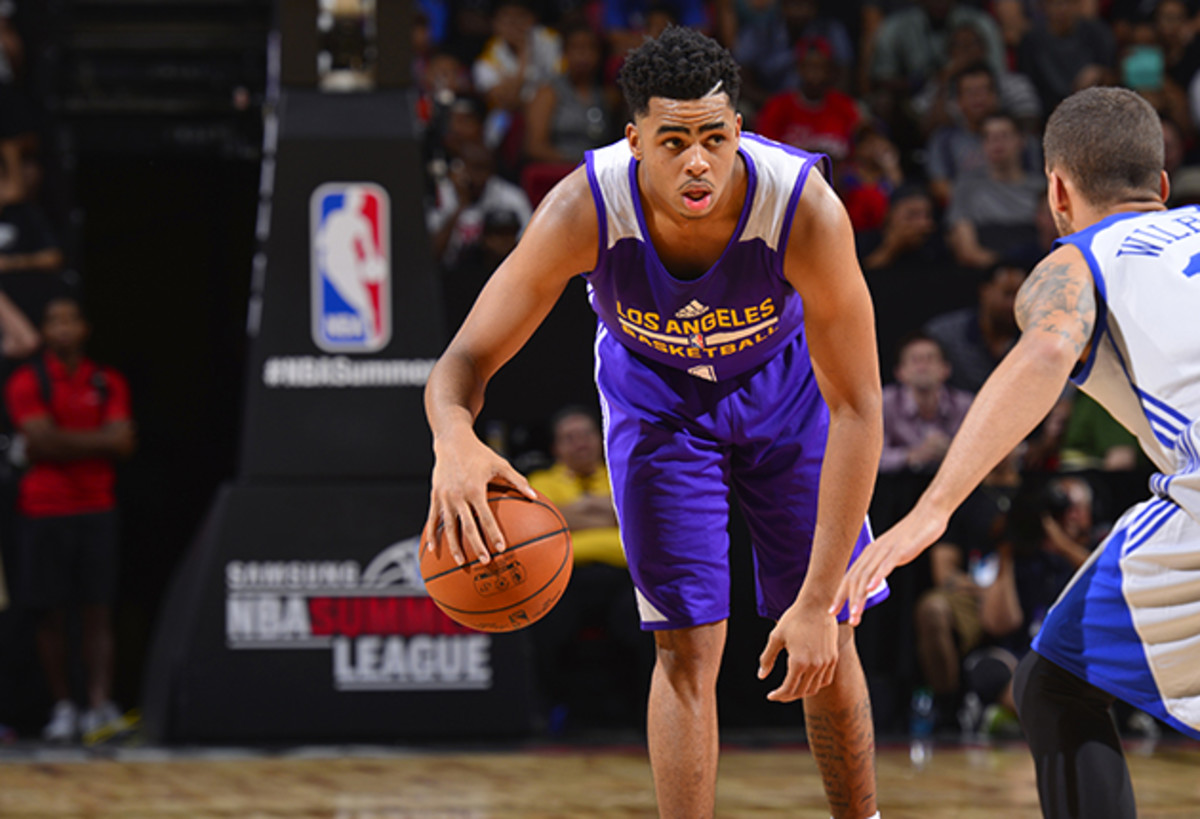
As for Russell, the draft night hype has dissolved into an off-kilter adjustment period endured by many young point guards. The Ohio State product is averaging 9.5 points, 3.8 assists and 5.8 turnovers while shooting 31.7% overall and 7.7% from deep. Russell's unsightly assist-to-turnover ratio bottomed out at 1-to-8 during a loss to the Knicks, as he missed cutters, got stuck in the air, found himself boxed in by crowds and had quality passes fumbled away through no fault of his own. Madsen actually pulled Russell from the game down the stretch, a decision the rookie said he "applauded" because he wasn't performing to the necessary standard.
"D'Angelo was a little bit out of sorts tonight," Madsen admitted after the loss. "Today was a game where D'Angelo wasn't D'Angelo. That's OK. This is his first experience at this level. He works hard, he wants to be great and he will be great. People have off games."
There were plenty of confidence-killing elements at play: Russell is facing better competition, his outside shot just hasn't been falling, he's found himself doing a lot of dribbling on the perimeter without getting anywhere, and the roster pieces around him aren't really anything to write home about.
"It's an adjustment trying to be relaxed, poised and patient at the same time as running the offense and keeping guys interested," Russell said of his struggles against New York. "I forget that it's just Summer League. I'm trying to get better so fast instead of being patient and letting it come to me. ... In college, I remember struggling a little bit in the beginning. I'm glad I'm getting it out so I know what to prepare for when the season comes."
Russell got a touch snappy when asked if perhaps the passing windows were closing more quickly than they did at the NCAA level.
"Hell no," Russell said. "I'm forcing it. I'm trying to make something out of nothing. Guys aren't open when I'm trying or our guys aren't expecting it."
He looked better against Dallas on Wednesday, posting five assists against three turnovers and producing one beautiful dime. Working his way through a high screen in his trademark style, a smooth herky-jerky movement that looks like James Harden on fast forward, Russell got to the foul line, faked a jumper, and split two defenders with a bounce pass that led to a Tarik Brown dunk. This was the type of play that had Lakers executives and fans drooling during the pre-draft period.
"I'm just settling down," Russell said Wednesday night. "A lot of those turnovers are from risk-taking. It's successful sometimes, but at this level it doesn't work all the time. Just slowing down and being patient."
Like Randle, the regular-season roster fit for Russell isn't as clear as it should be: Clarkson enjoyed a solid rookie season and will spend some time at the one, Williams received $21 million over three years this summer and is a capable ball-handler, and Bryant looms as a ball-demanding, ball-stopping possession sponge. Often, a No. 2 overall pick can expect the keys to the car, but that approach would require trust from coach Byron Scott and space from Russell's veteran teammates. A more likely alternative might see Russell eased into his responsibilities more gradually, and Madsen has been using him off the ball this week.
"D'Angelo can play the one, D'Angelo can play the two, and D'Angelo can play the three in some situations," Madsen said. "[Moving him off the ball is] just giving D'Angelo the full breadth of the spacing and spots he might find himself on the floor."
While positional versatility is generally a desirable quality, this approach feels more like a crutch that should go away sooner than later. If Russell is going to deliver on his draft position, he will need the ball in his hands and he will need to play at his natural spot, where he can use his excellent vision and play-making instincts to lead an offense. How long will it take for that transition to unfold?
"[Russell] hasn't taken the league by storm but that's okay," said a second talent evaluator. "Don't kill the guy yet just because [the Nuggets' No. 7 pick Emmanuel Mudiay] has outplayed him. Mudiay should look better here."
Such calls for patience in mid-July are almost always correct, and the extenuating circumstances surrounding both Randle and Russell are obvious. Randle is stuck balancing his recovery with his desire and need to grow as a player. Russell is a pass-first player wedged into a shoot-first summer environment without NBA-caliber pass recipients. It should get better, and soon.
Together, though, Randle and Russell enter the 2015-16 season facing a tricky purgatory: The next era of Lakers basketball, their era, is still a hypothetical out there on the horizon rather than a training camp reality. As the rabid fans wait anxiously on them, they wait too.
Biggest NBA Draft Busts Of All Time
Anthony Bennett, Cavaliers | No. 1 pick, 2013
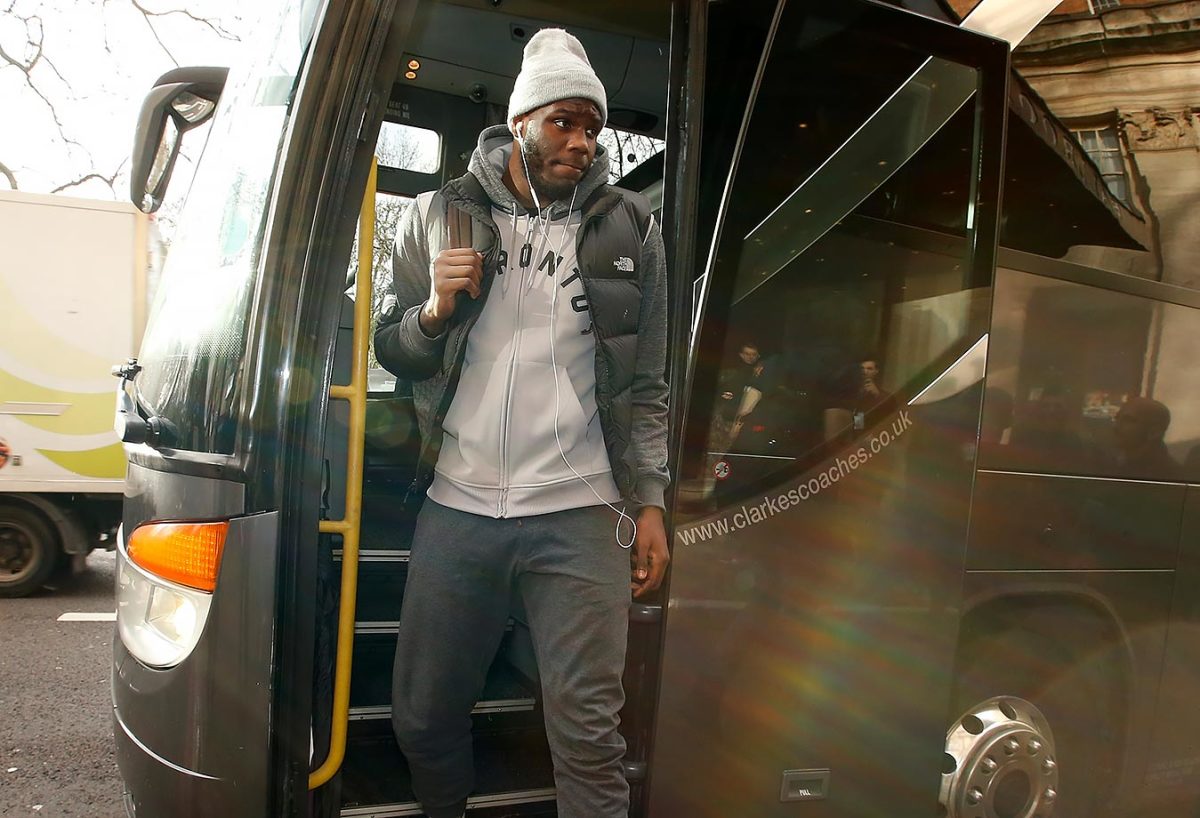
After burning out in both Cleveland and Minnesota in just two years, Bennett hardly logged any minutes in Toronto when the Raptors waived him on Feb. 29, 2016. The No. 1 overall pick, who was recently dropped by the Nets, owns averages of 4.4 points and 3.1 rebounds in just 12.6 minutes per game.
Hasheem Thabeet, Grizzlies | No. 2 pick, 2009
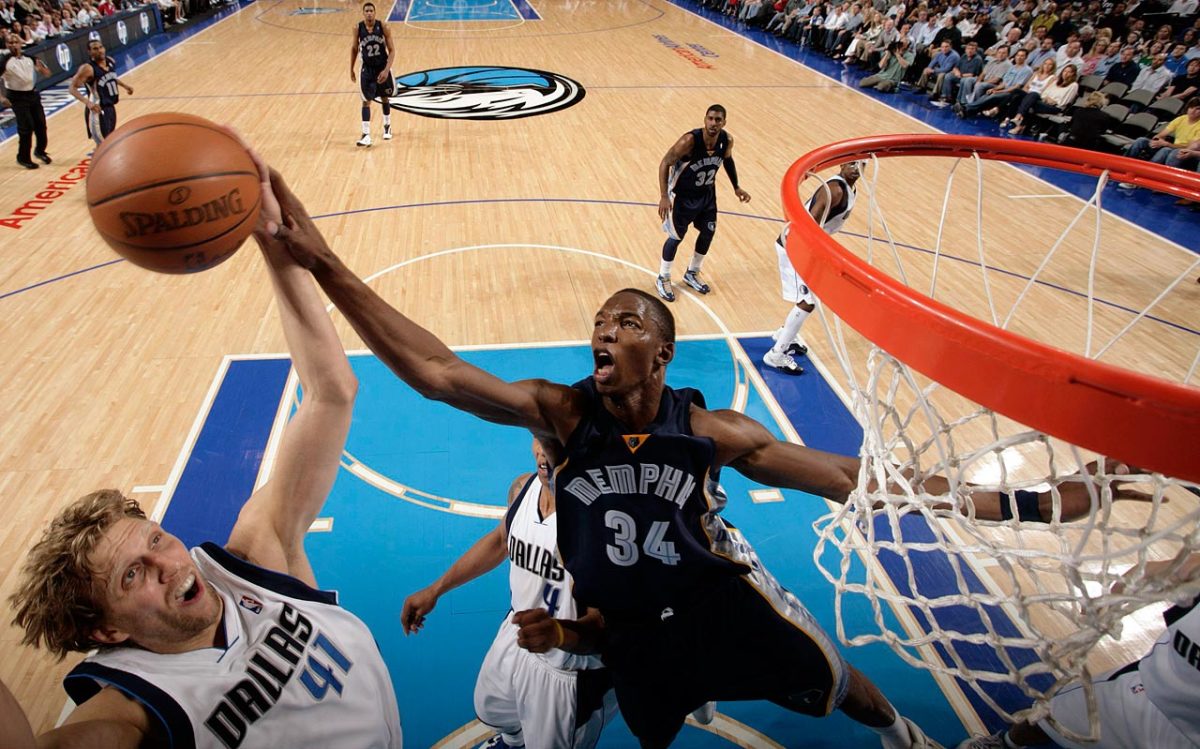
Thabeet has already been passed from Memphis to Houston to Portland to Oklahoma City. The former UConn center was always thought to be a long-term project, but he's yet to develop into a solid NBA center. He has career averages of 2.2 points and 2.7 rebounds in 10.5 minutes.
Joe Alexander, Bucks | No. 8 pick, 2008
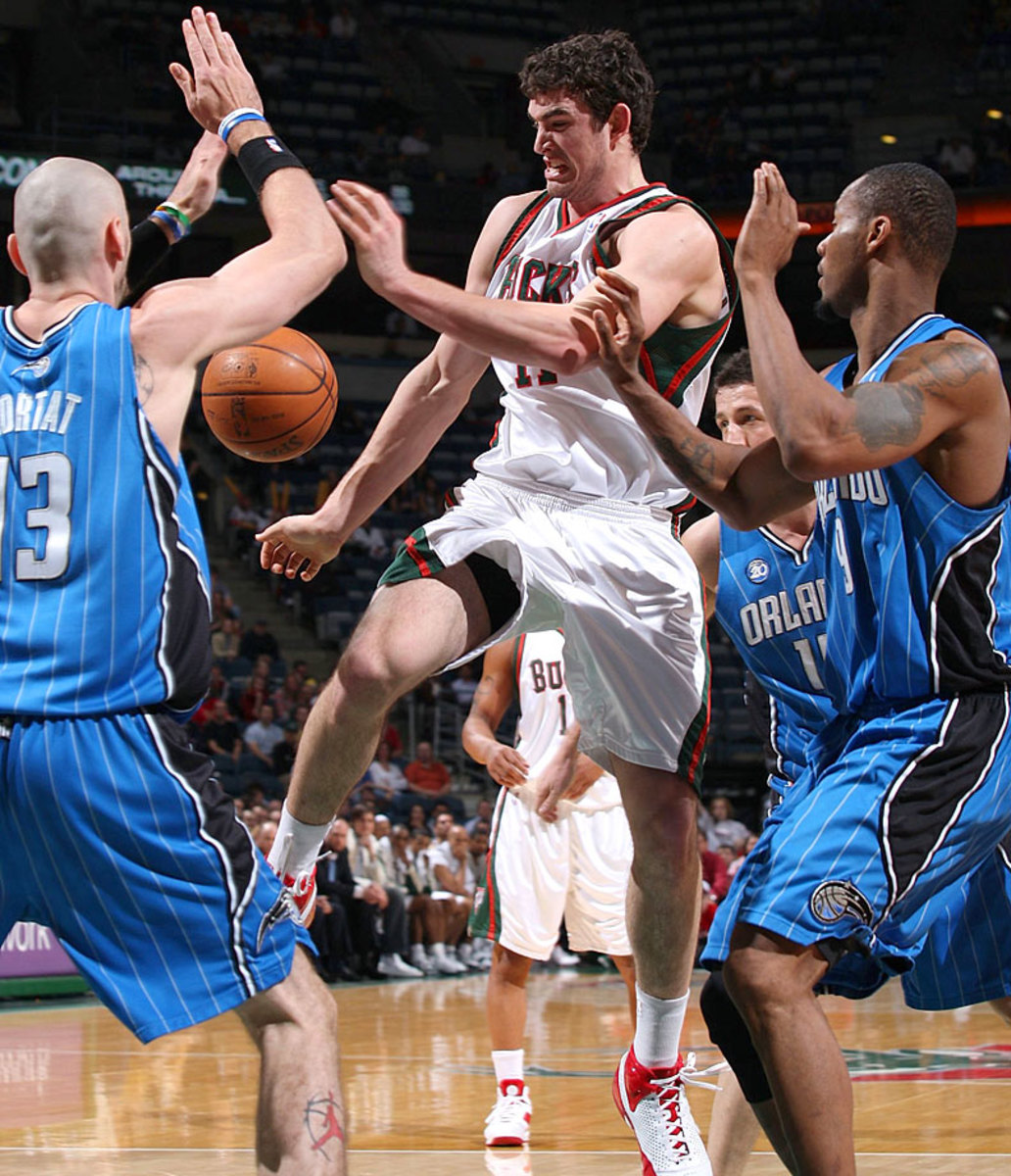
Alexander hasn't played in the NBA since 2010 (he was in Warriors camp in 2013) after averaging 4.2 points in 67 games. Ryan Anderson, Serge Ibaka and Nicolas Batum were among the fellow forwards who were taken after Alexander in the first round.
Greg Oden, Trail Blazers | No. 1 pick, 2007
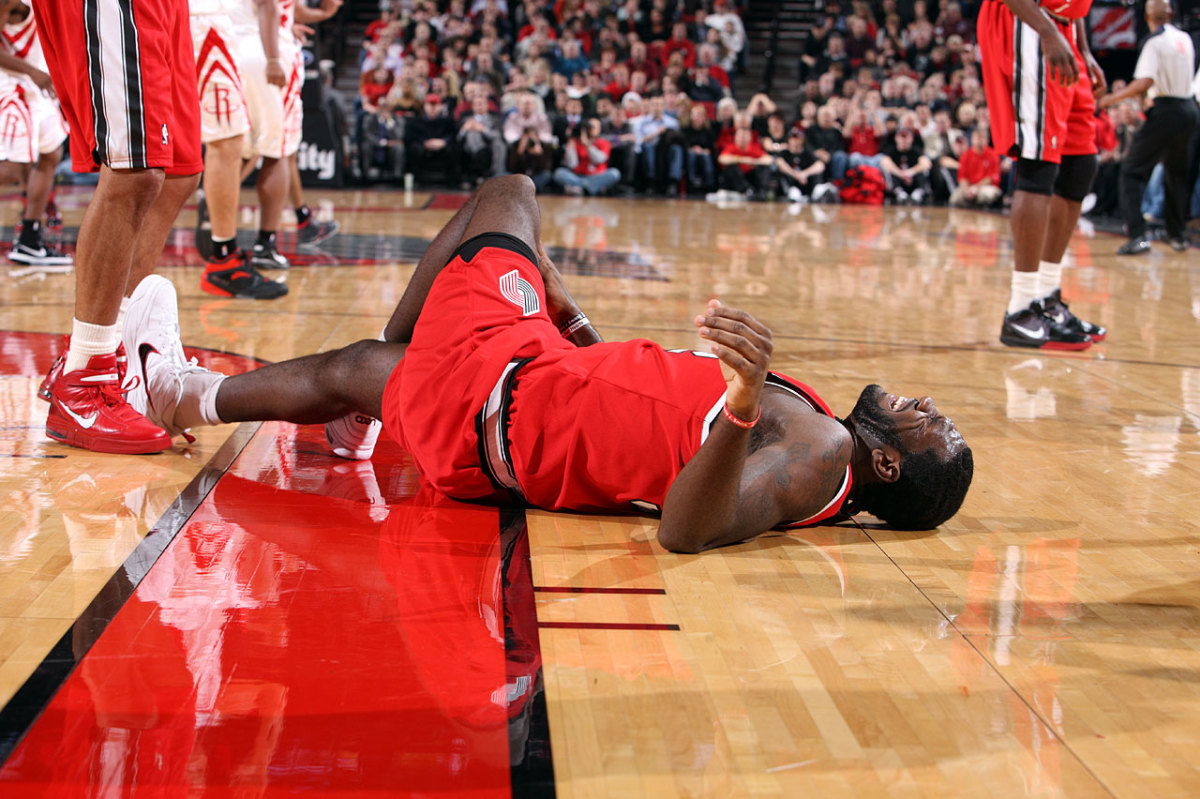
"I know I'm one of the biggest busts in NBA history and I know that it'll only get worse as Kevin Durant continues doing big things ... It's frustrating that my body can't do what my mind wants it to do sometimes. But worrying or complaining about it isn't going to fix anything," said Oden. After being released by the Blazers in March 2012, Oden spent the entire 2012-13 season rehabilitating from multiple knee surgeries. He last played, sparingly, with the Heat in 2014.
Adam Morrison, Bobcats | No. 3 pick, 2006
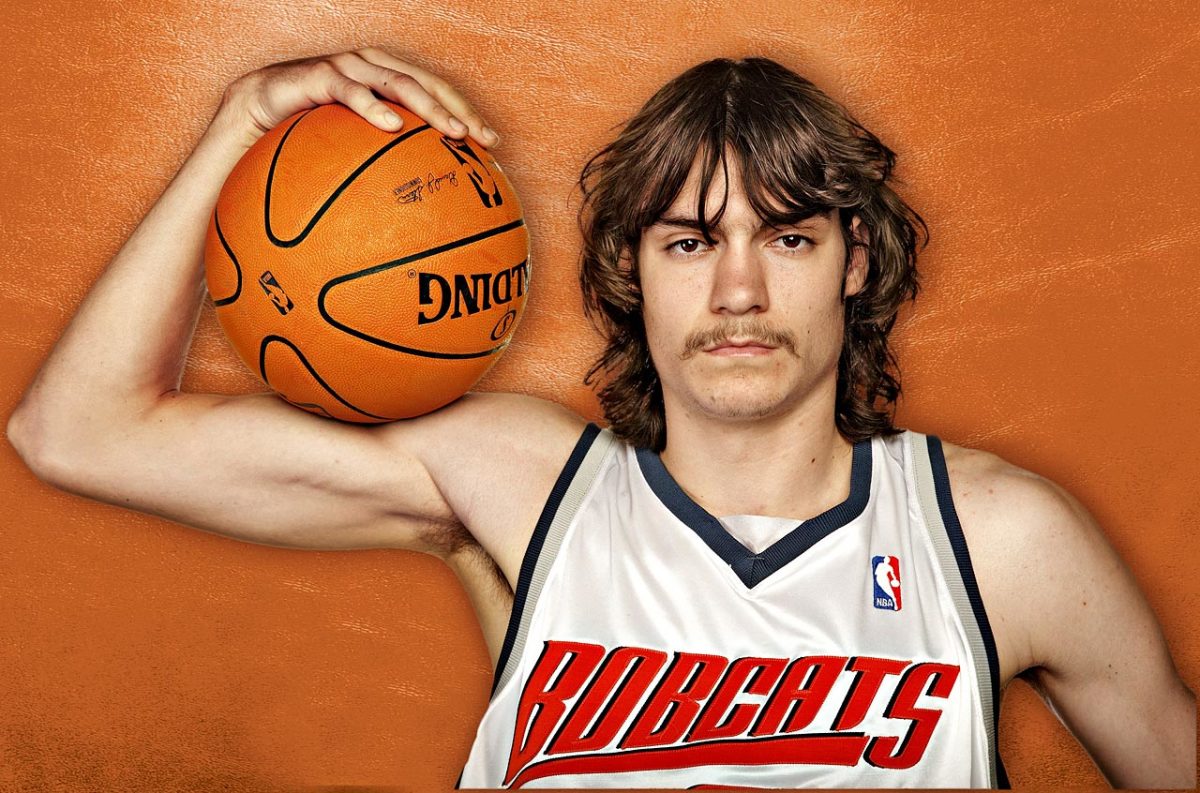
Five years after missing on Kwame Brown, Michael Jordan fared no better with Morrison. The former Gonzaga star averaged 11.8 points as a rookie but shot only 37.6 percent. He missed the next season with a knee injury, was traded to the Lakers in 2009 and quietly fell out of the league in 2010.
Fran Vazquez, Magic | No. 11 pick, 2005
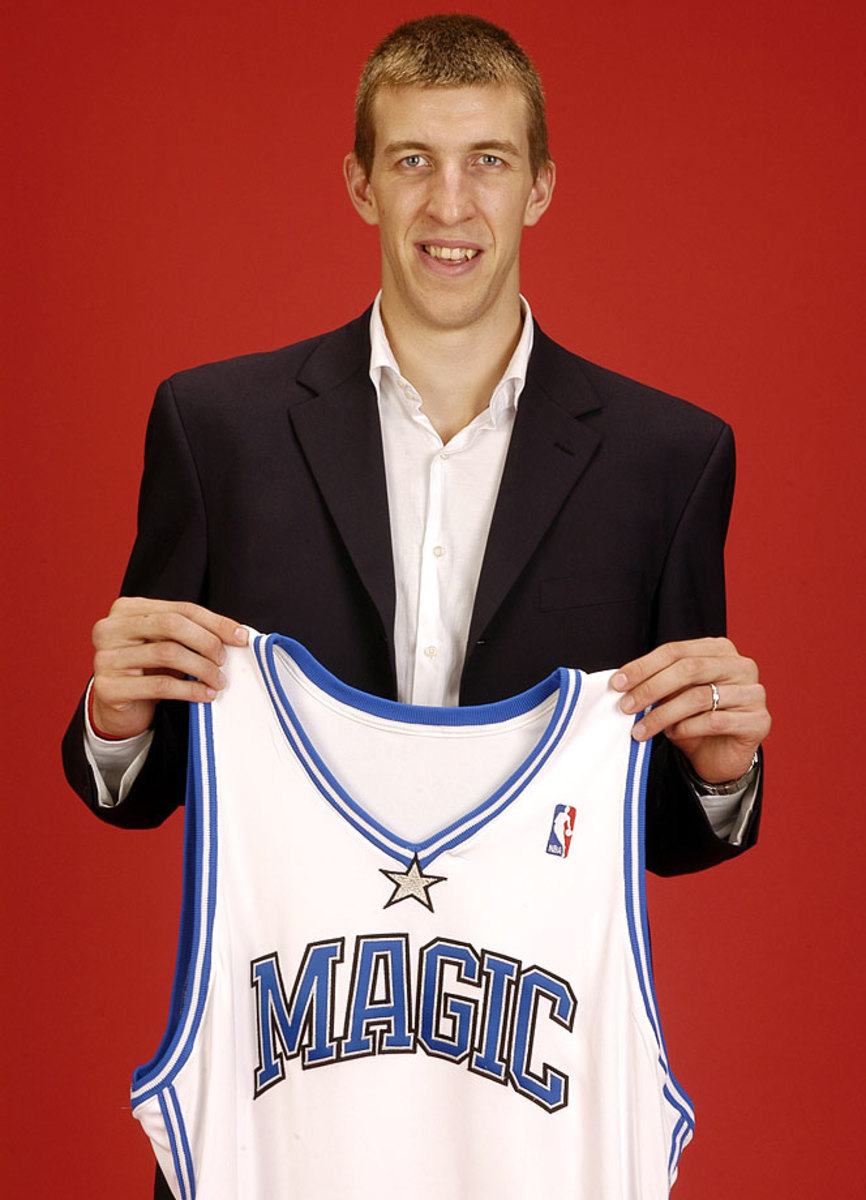
This isn't about the Spanish big man's NBA body of work — after all, there is none. It's about the fact that Orlando used a valuable lottery pick on a player who hasn't even suited up for them. Vazquez is now 31 with over a decade under his belt in the Spanish league.
Rafael Araujo, Raptors | No. 8 pick, 2004
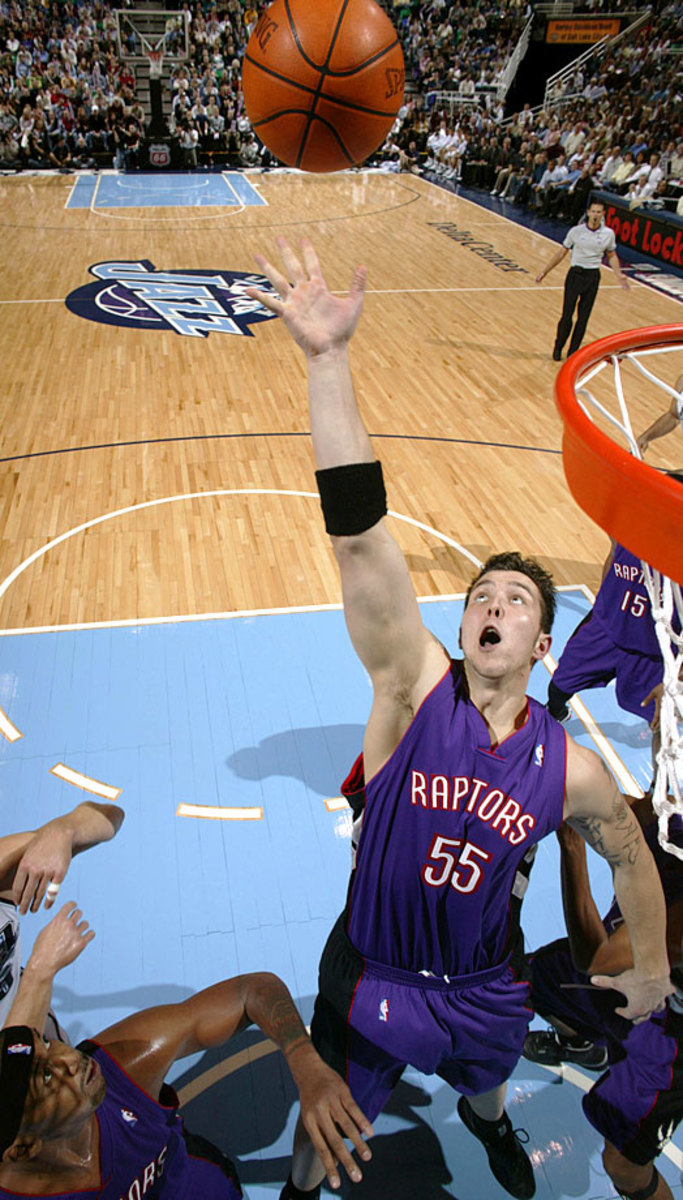
He went about 10 spots higher than was expected, and about 25 spots higher than was deserved. The 6-11 center from BYU was a three-year washout in the NBA.
Darko Milicic, Pistons | No. 2 pick, 2003
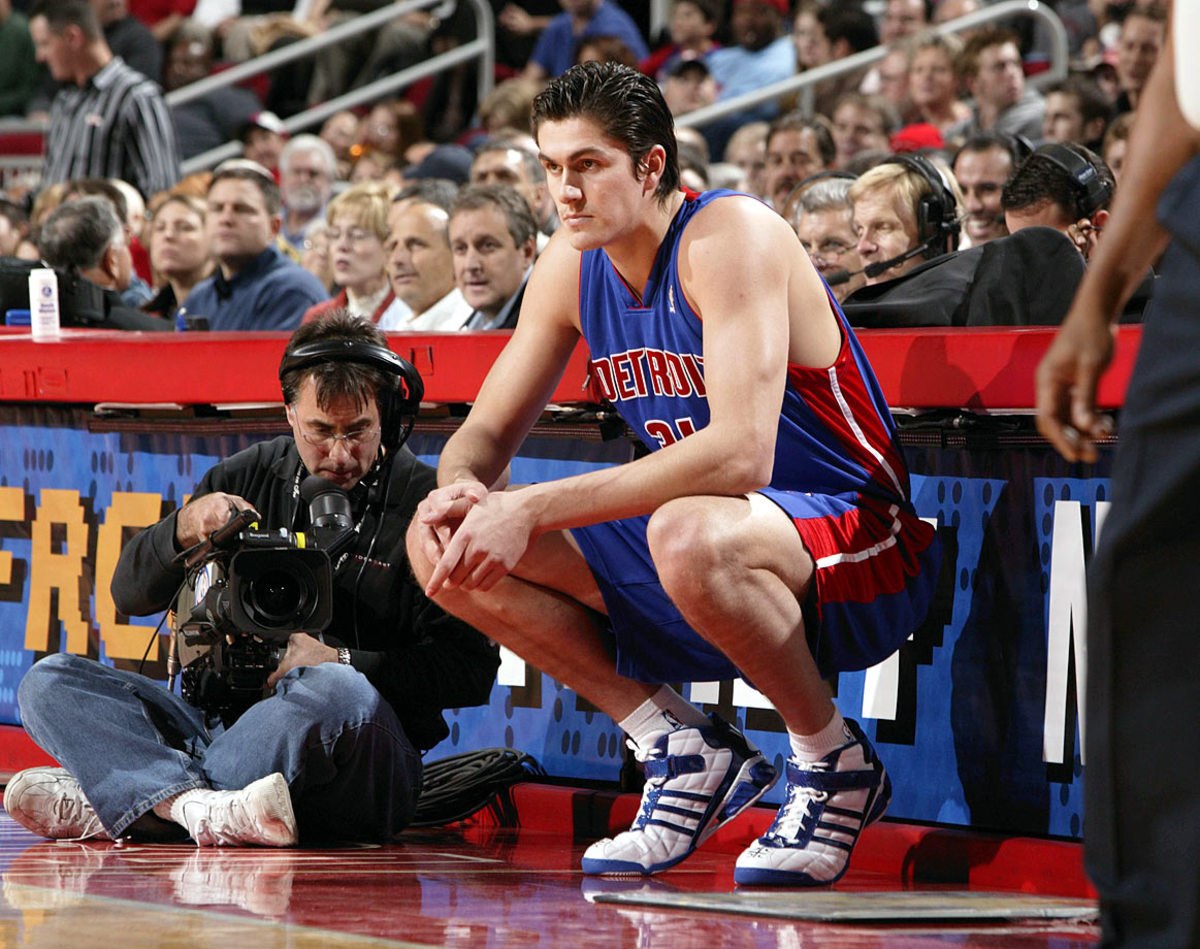
LeBron James, Milicic, Carmelo Anthony, Chris Bosh and Dwyane Wade — which top five pick from 2003 doesn't belong? In fairness, the 28-year-old Milicic showed flashes of strong play. But overall, in 10 seasons Milicic averaged 6.0 points and 4.2 rebounds while playing for six teams; he did not play in the NBA in 2013-14. Joe Dumars and the Pistons whiffed on this one.
Nikoloz Tskitishvili, Nuggets | No. 5 pick, 2002
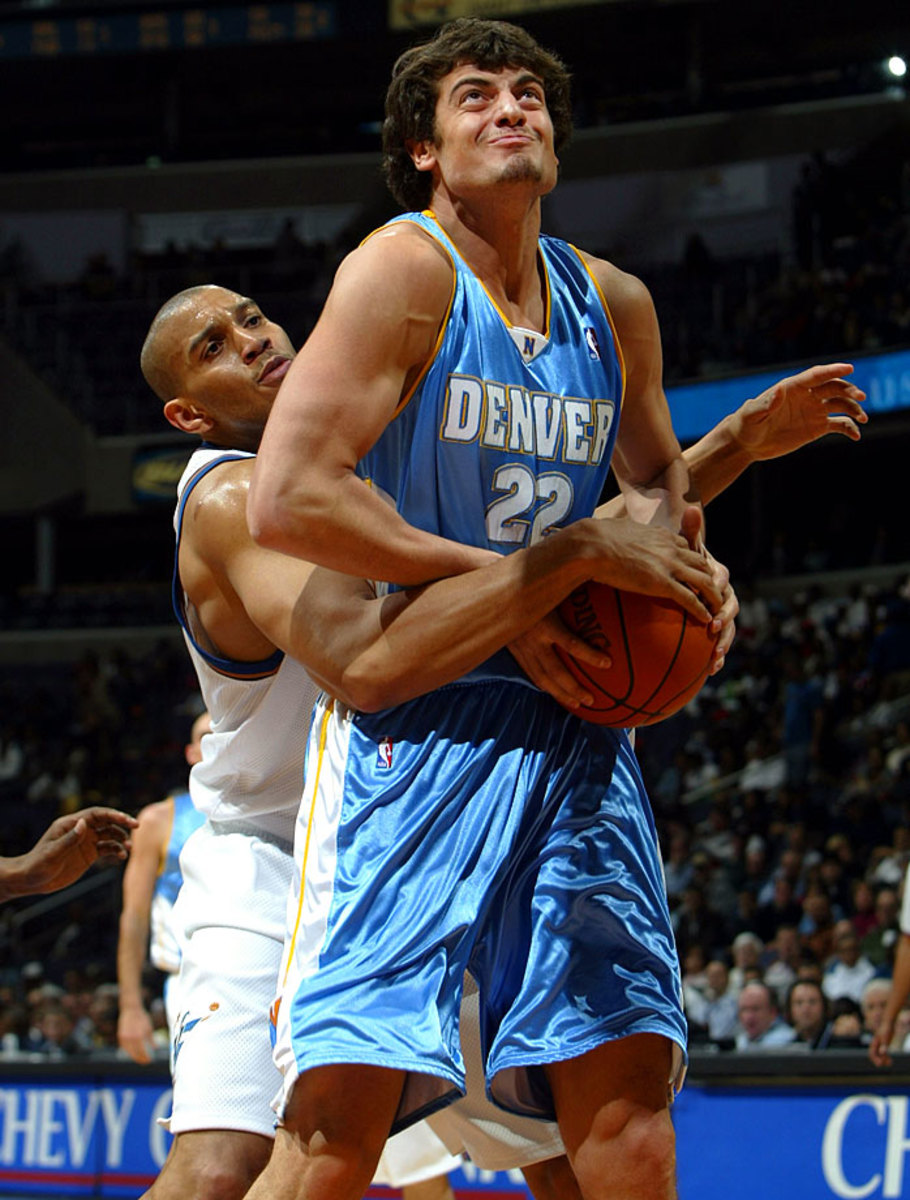
Skita created a buzz with his predraft workouts, and that was that. Four teams discarded him in four seasons. Then-GM Kiki Vandeweghe and the Nuggets did better with the other 19-year-old they acquired two picks later: Nene.
Kwame Brown, Wizards | No. 1 pick, 2001
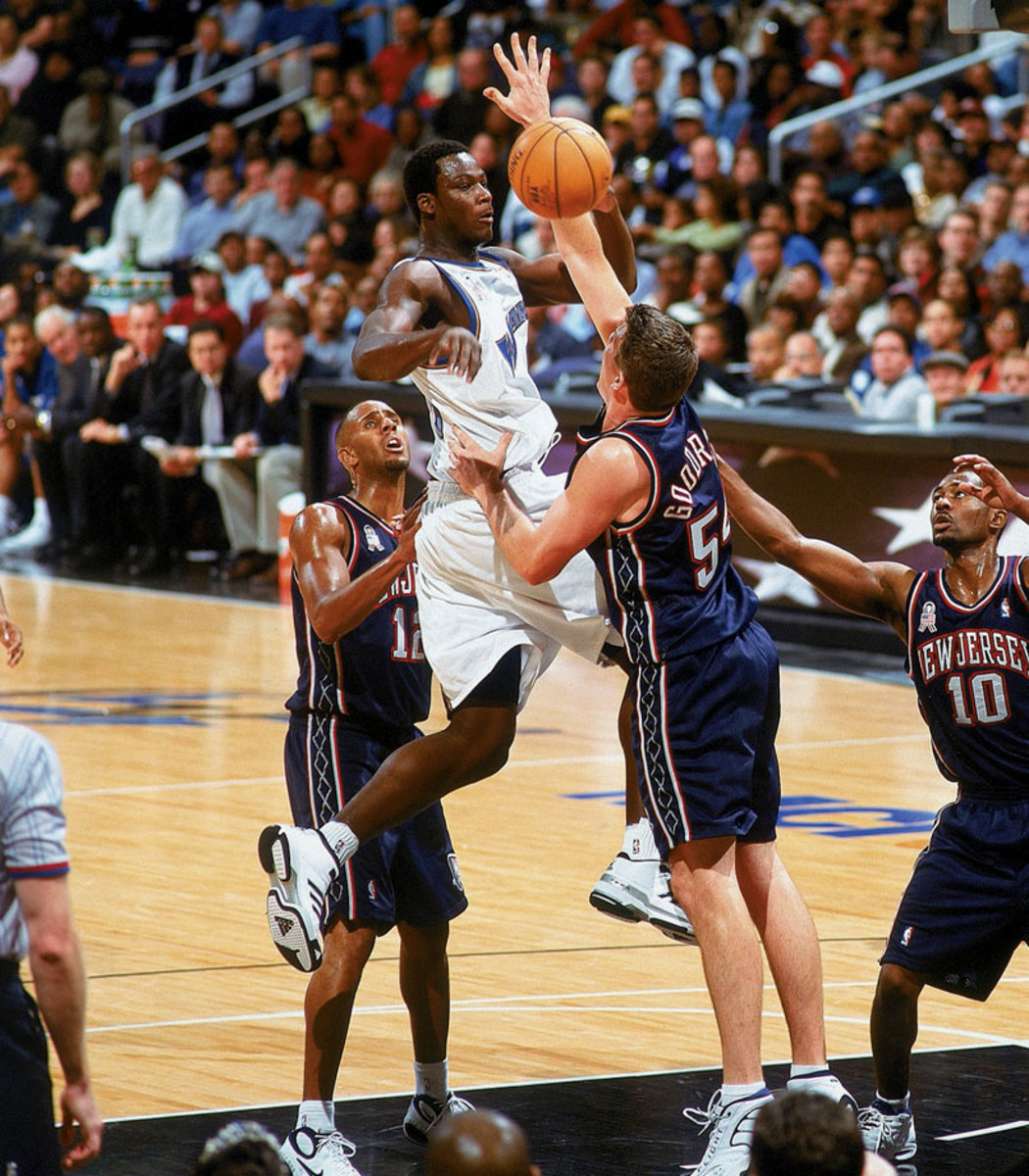
Michael Jordan's handpicked choice played for seven teams in 12 seasons and sports career averages of 6.6 points and 5.5 rebounds. Brown, however, did experience something of a rebirth after reuniting with Jordan in Charlotte in 2010-11, when the 6-11 center averaged 9.4 points and 7.0 rebounds. Those were his best numbers since 2006-07. He was hurt for most of 2011-12 after signing with Golden State and played limited minutes with Philadelphia in 2012-13 before being waived in November 2013.
2000 first round
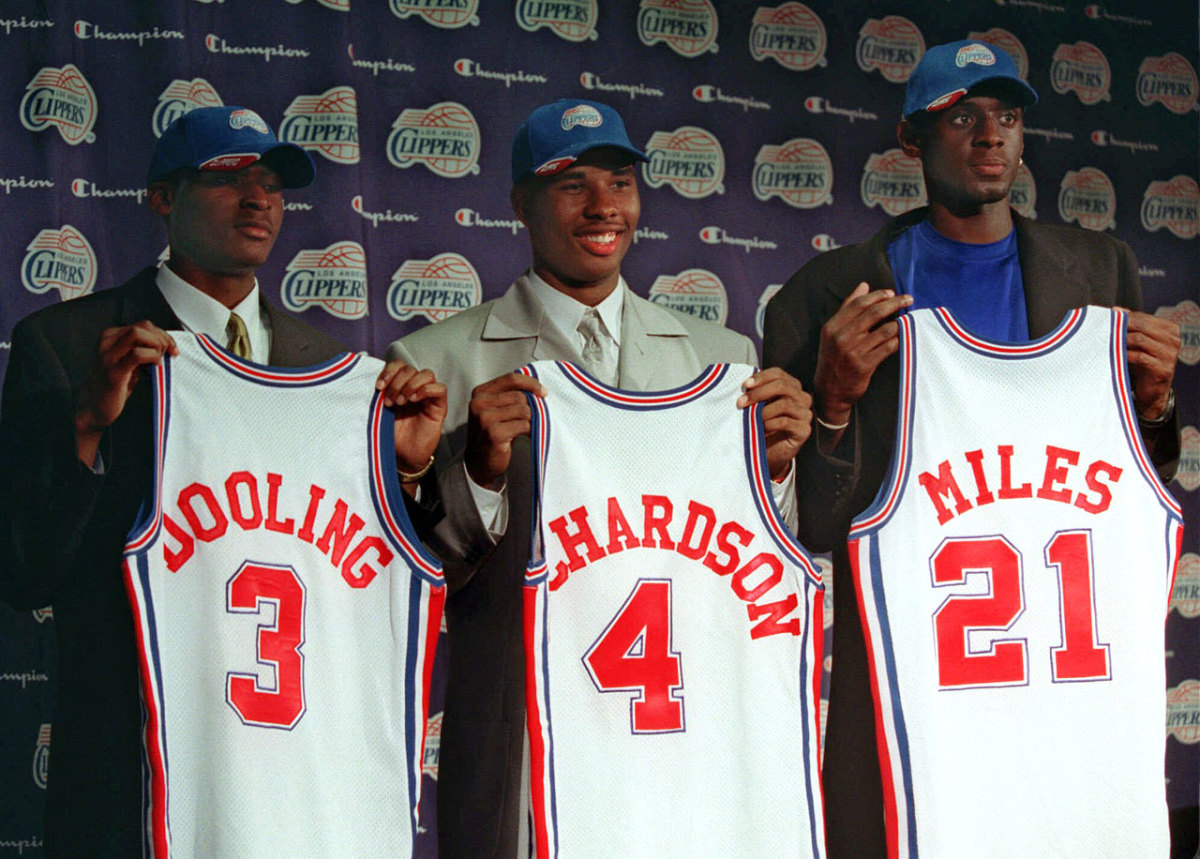
Most of the GMs in '00 got their picks right; this was just a bad group of players. Here was the top half of the first round: Kenyon Martin, Stromile Swift, Darius Miles, Marcus Fizer, Mike Miller, DerMarr Johnson, Chris Mihm, Jamal Crawford, Joel Przybilla, Keyon Dooling, Jerome Moiso, Etan Thomas, Courtney Alexander, Mateen Cleaves and Jason Collier. Particularly unfortunate for the Clippers, who wound up with three of the top 18 picks.
Jonathan Bender, Pacers (via Raptors) | No. 5 pick, 1999
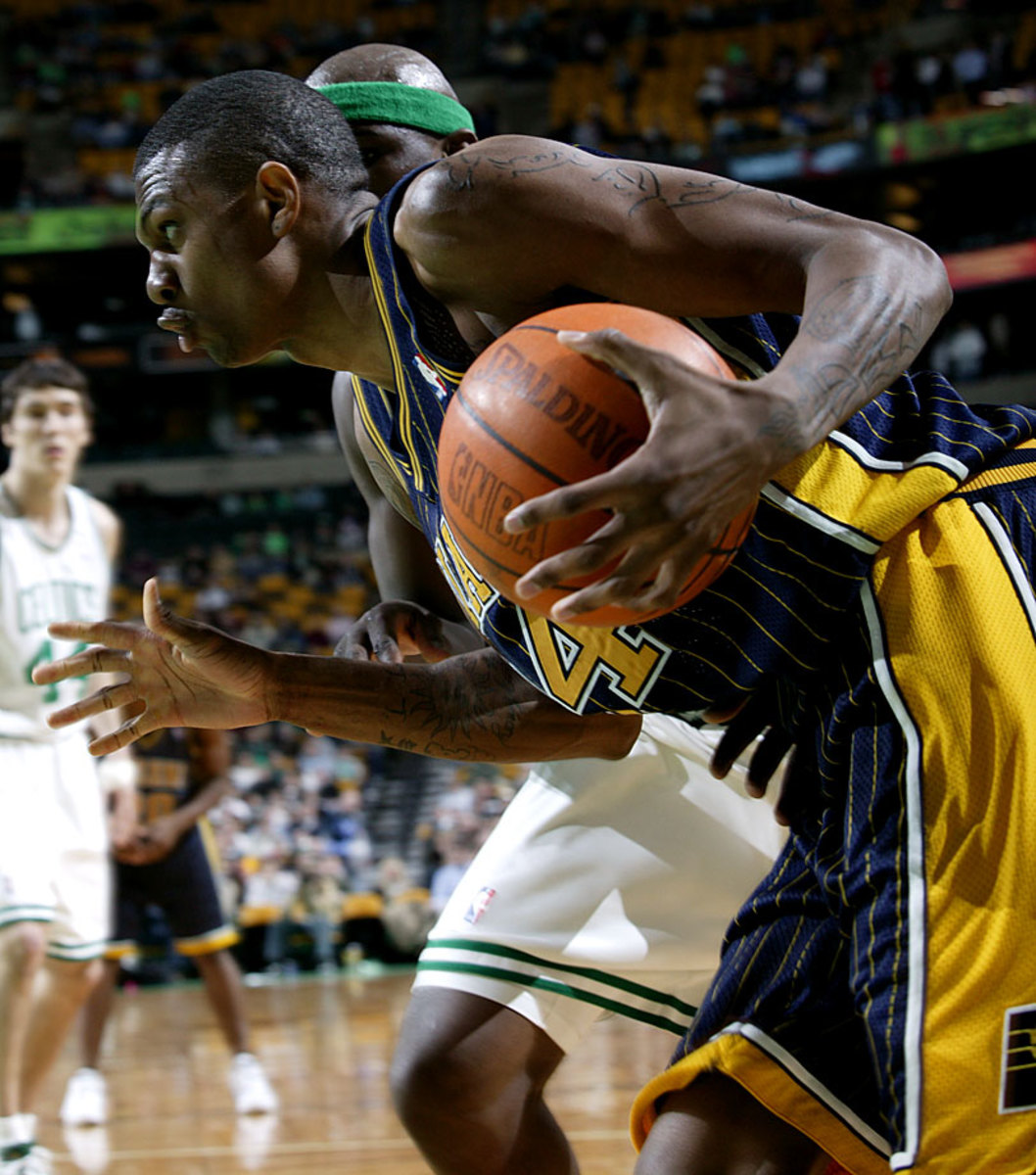
Indiana acquired the draft rights to the preps-to-pros, Kevin-Garnett look-alike for solid big man Antonio Davis. Bender showed tantalizing flashes of his potential but never put it together before cutting short his career because of knee injuries in February 2006. Bender had a 25-game comeback with the Knicks in 2009-2010.
Michael Olowokandi, Clippers | No. 1 pick, 1998
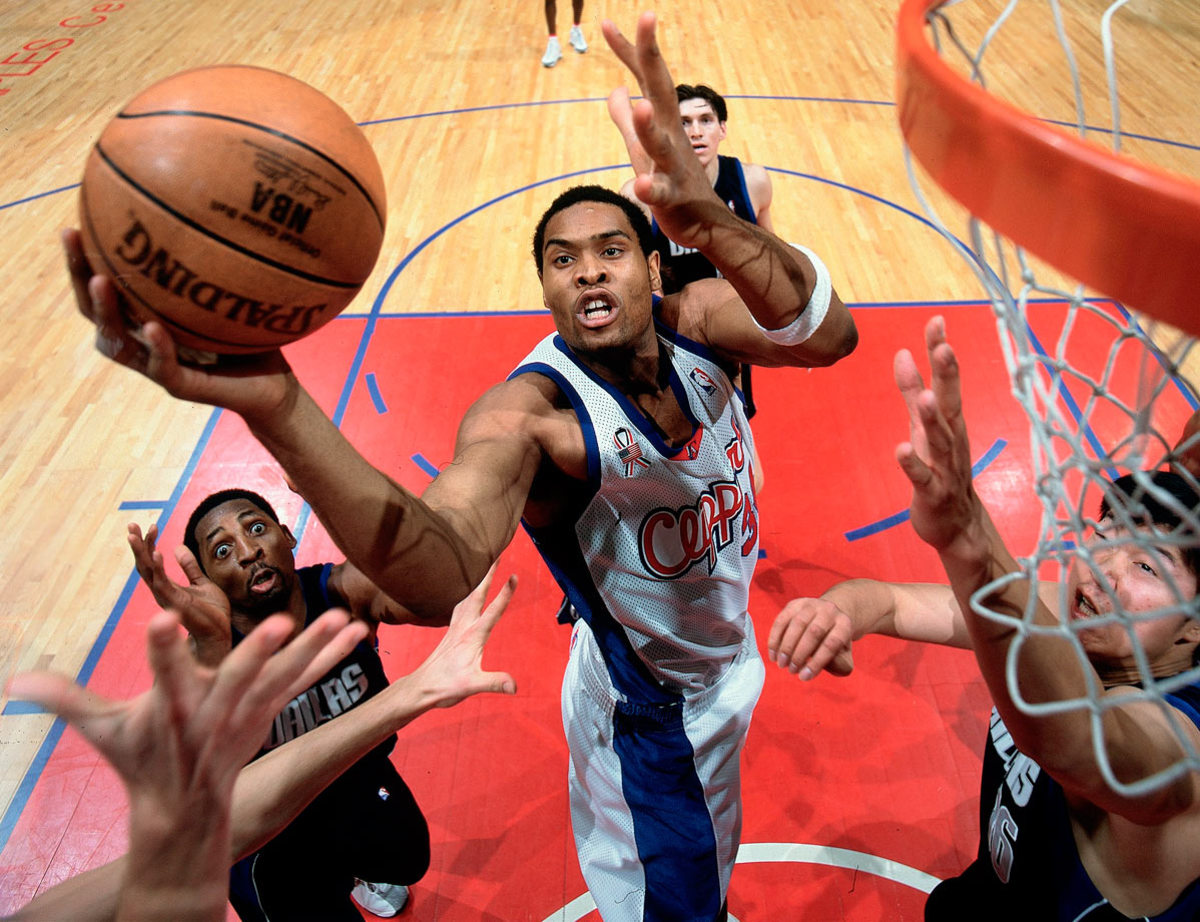
Bust-worthy on so many levels. The Kandi Man was taken before future All-Stars Antawn Jamison, Vince Carter, Dirk Nowitzki and Paul Pierce and a host of more suitable selections. Even the final pick of the first round, Nazr Mohammed, has had a much more distinguished career in the pivot.
Robert Traylor, Bucks (via Mavs) | No. 6 pick, 1998
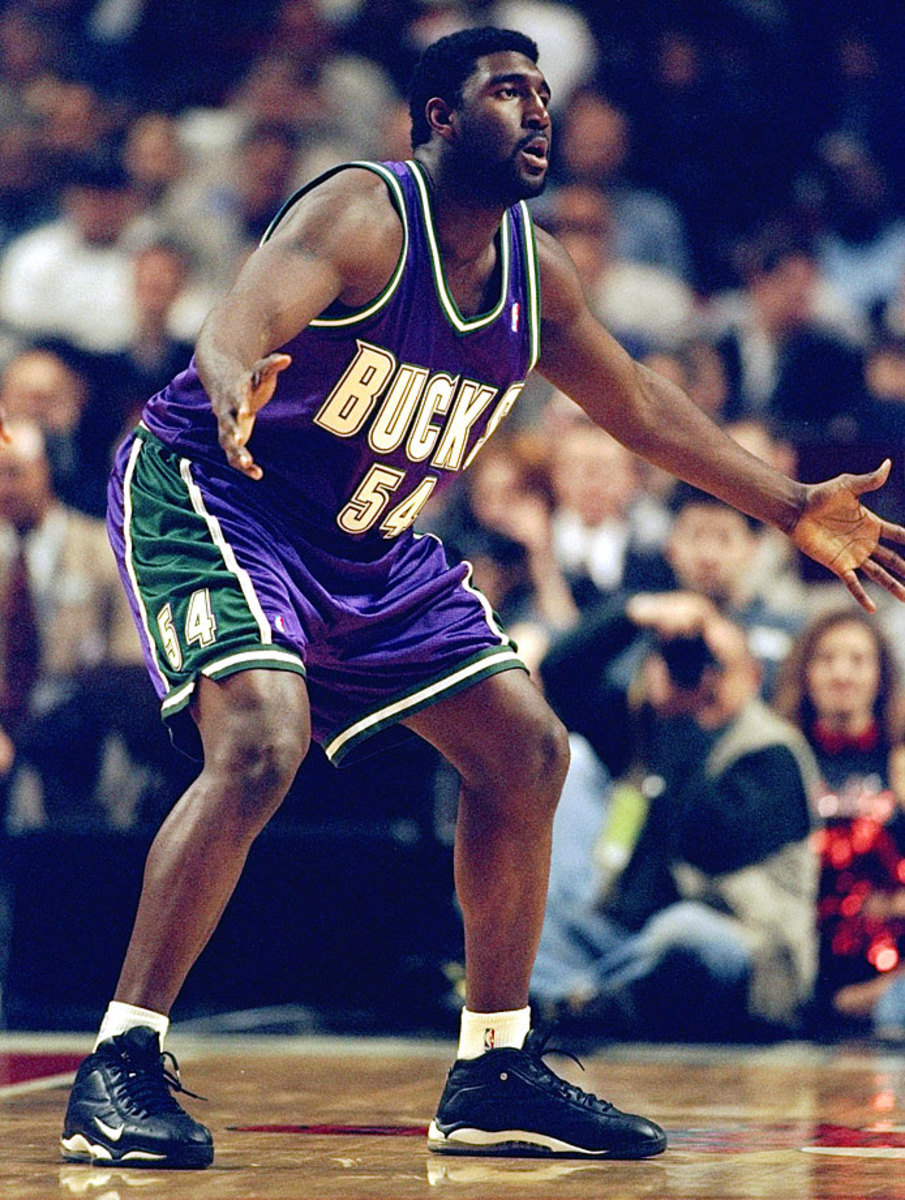
In a prearranged draft-night trade that turned into one of the most lopsided deals in history, the Mavericks sent Traylor to the Bucks for Dirk Nowitzki and Pat Garrity, whom Dallas dealt to Phoenix for Steve Nash. Nowitzki was named MVP in 2007 and led the Mavs to the 2011 title with an epic postseason performance. Meanwhile, the Tractor averaged 4.8 points and 3.7 rebounds in seven seasons.
Joe Smith, Warriors | No. 1 pick, 1995
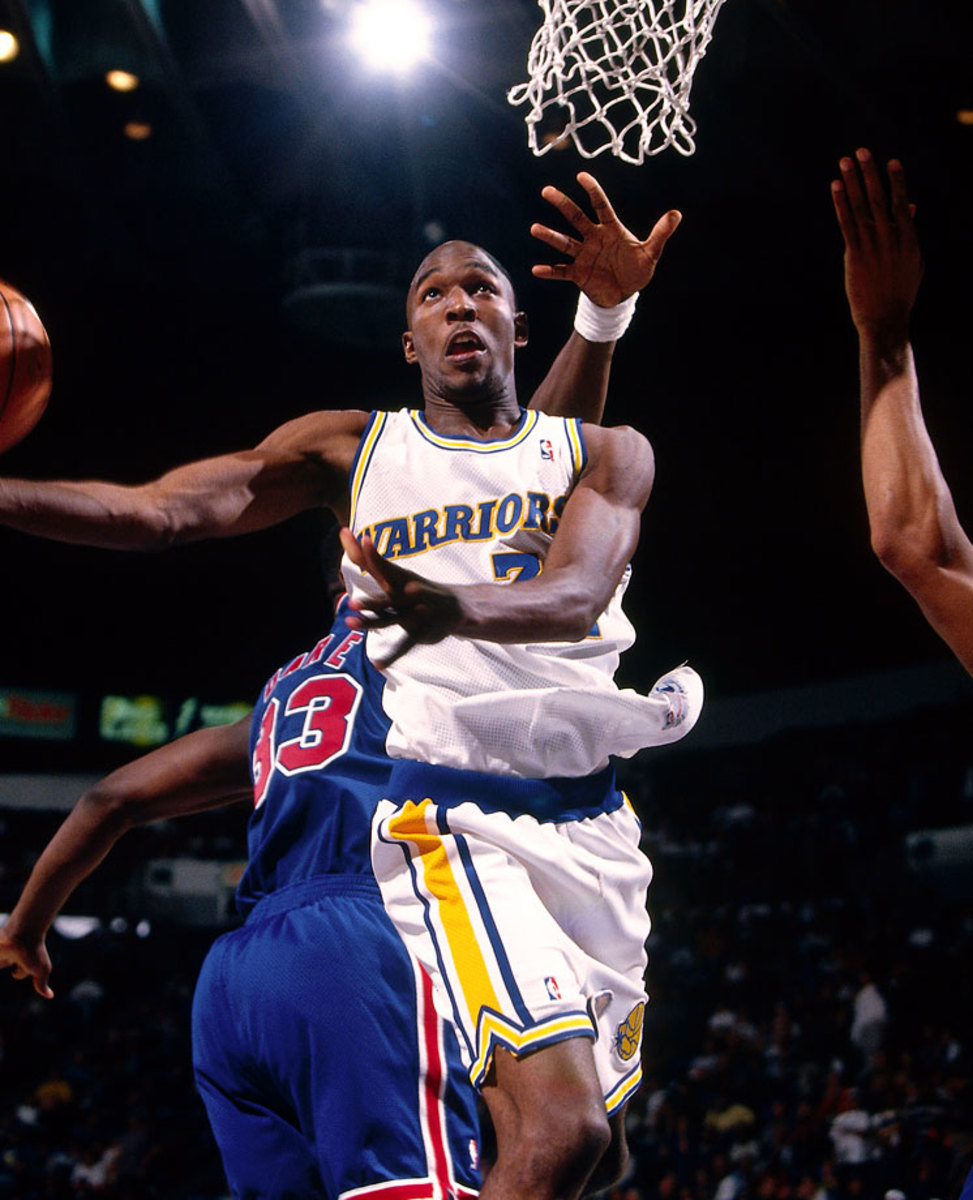
Average in name and game, Smith was serviceable while playing for 12 teams over 16 years, but later selections Antonio McDyess, Jerry Stackhouse, Rasheed Wallace and (especially) Kevin Garnett enjoyed better careers.
Ed O'Bannon, Nets | No. 9 pick, 1995
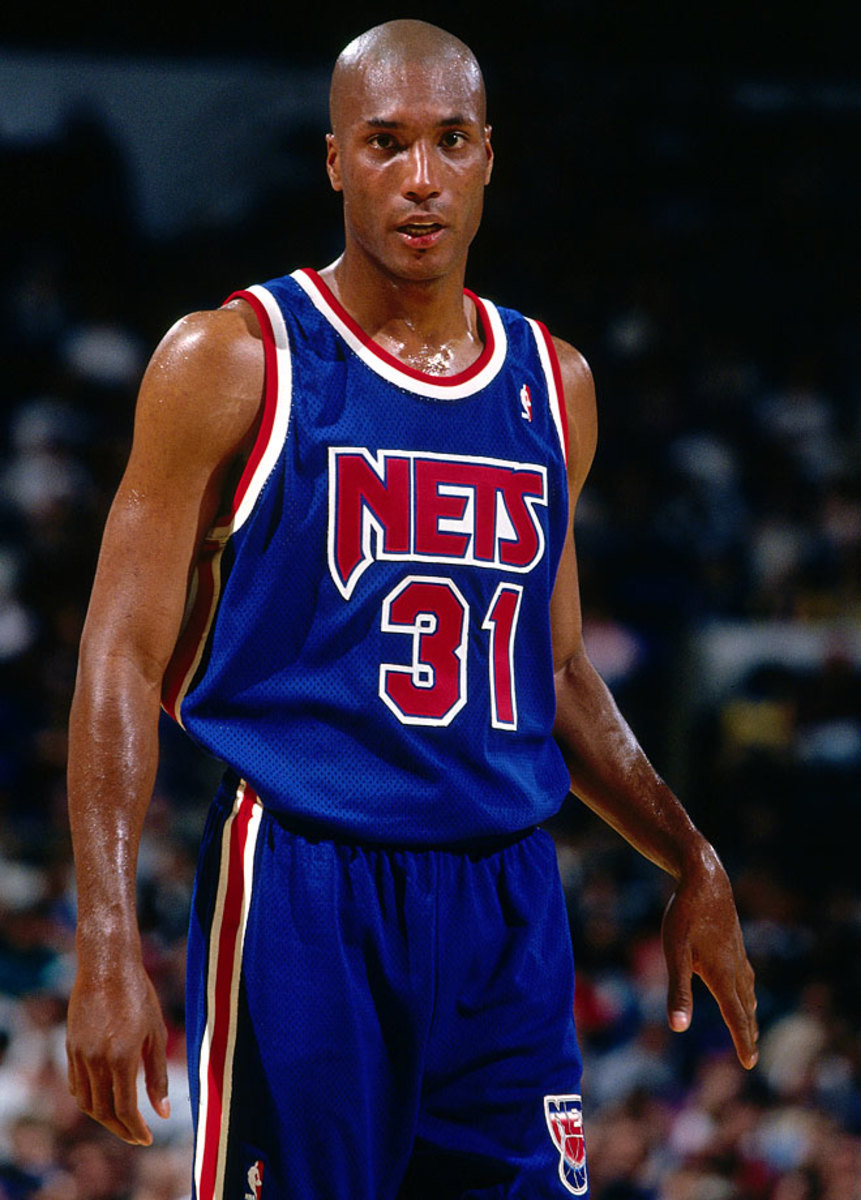
The older and better of the brothers who led UCLA to an NCAA championship in 1995, O'Bannon is the perfect example of a player who had multiple talents but none that rose to an NBA level. He lasted only two seasons, playing with the Nets and Mavericks.
Shawn Bradley, 76ers | No. 2 pick, 1993
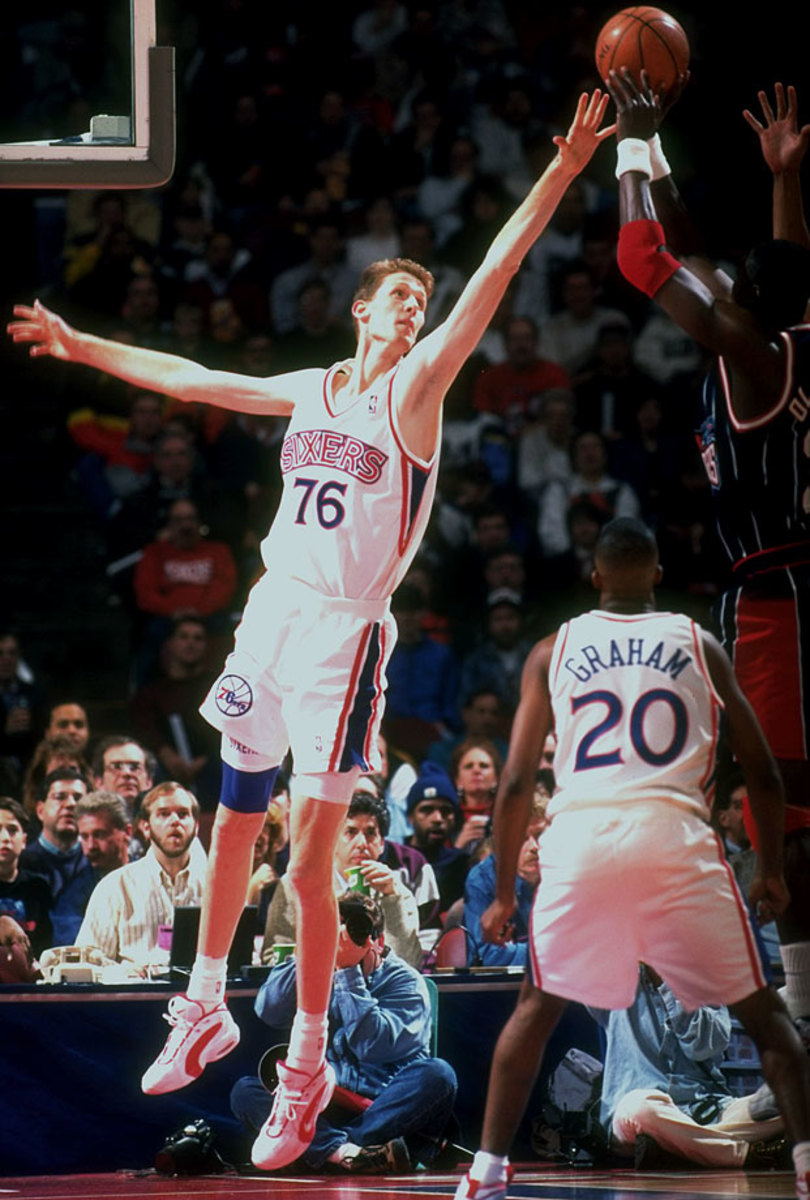
Find him on a poster near you. To his credit, Bradley developed into a so-so big man who ranks 14th on the all-time list in blocks. He's the perfect example of a player whose draft position colors the perception of his career.
Bo Kimble, Clippers | No. 8 pick, 1990
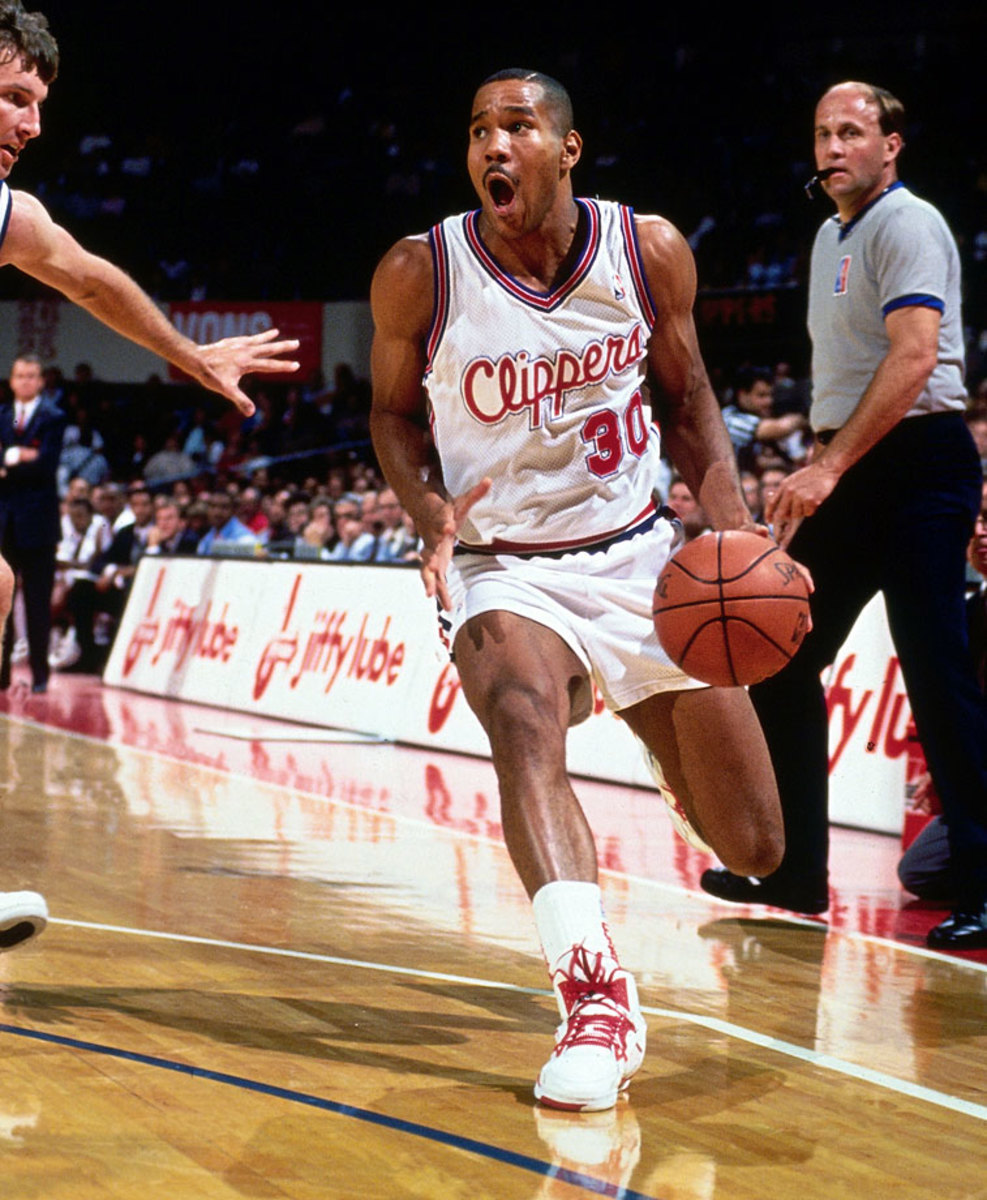
A high-scoring, high-profile college star at Loyola Marymount, Kimble was out of the league after 105 NBA games split between the Clippers and Knicks.
Danny Ferry, Clippers | No. 2 pick, 1989
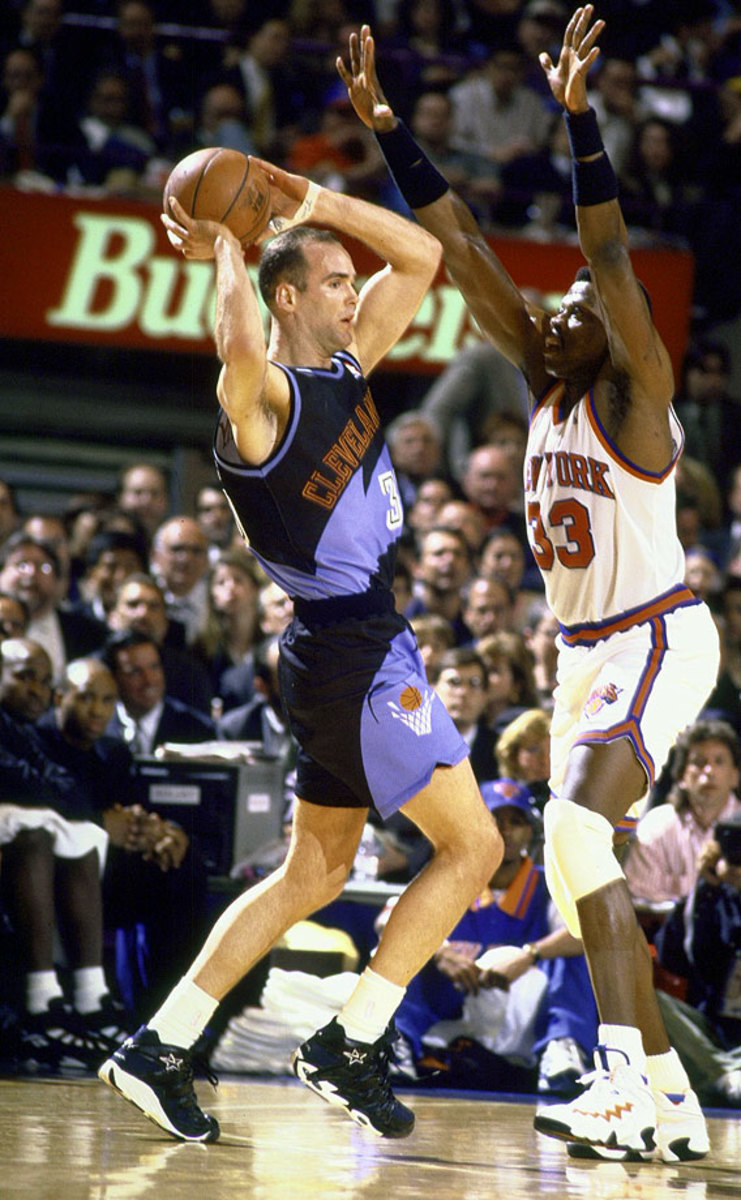
Ferry had no interest in playing for the Clippers so he toiled for a season in Italy before Los Angeles agreed to trade his rights. Well-respected Cavs GM Wayne Embry made one of the worst moves of his career by sending scoring machine Ron Harper to the Clippers for Ferry, who spent 10 nondescript seasons in Cleveland. (Incidentally, the player taken before Ferry, Pervis Ellison, makes many "bust" lists, though he did have a couple of strong seasons before injuries wrecked his career.)
Dennis Hopson, Nets | No. 3 pick, 1987
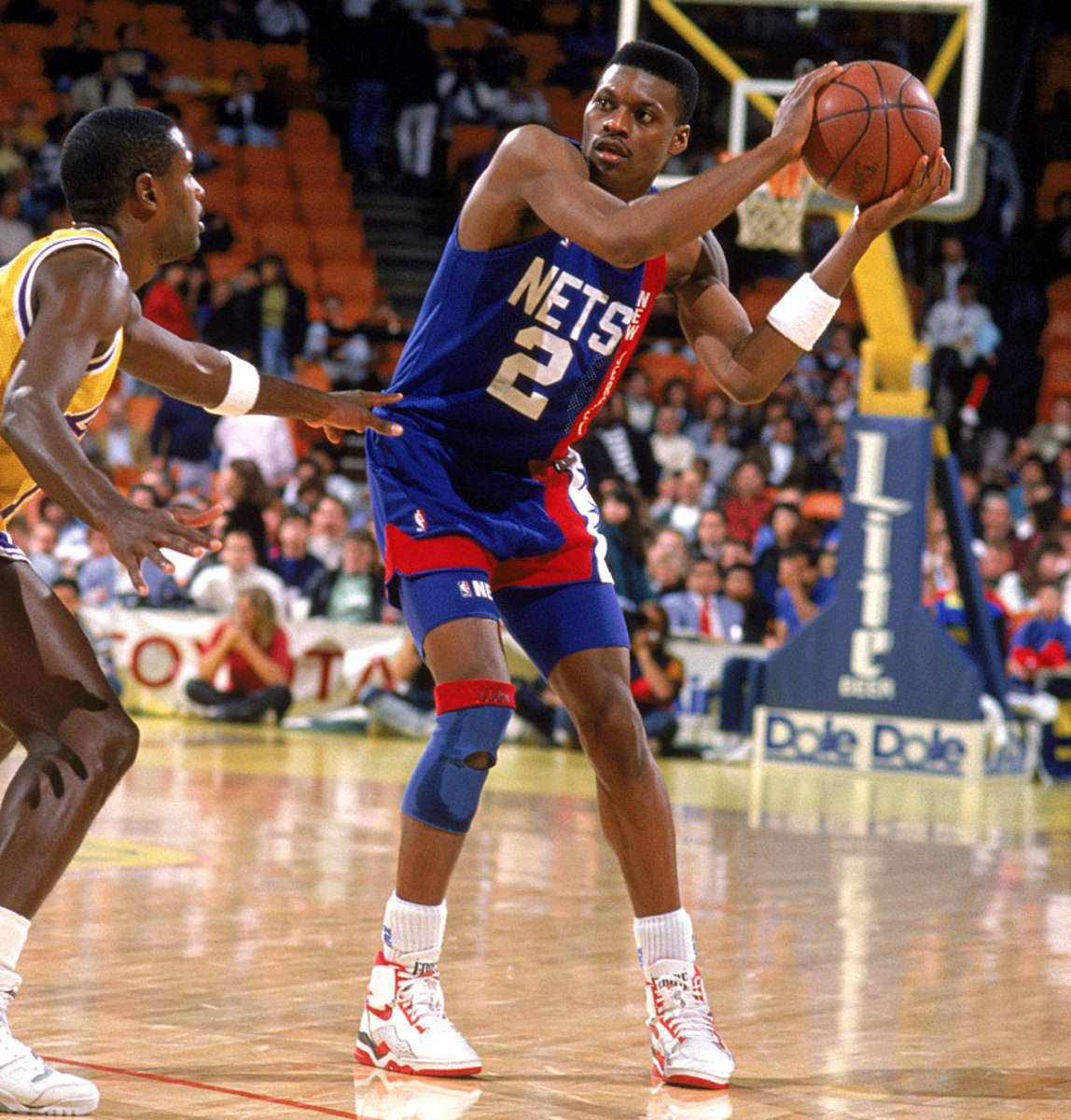
The first in a series of "Next Jordans" flamed out before producing a fraction of what MJ accomplished. Hopson averaged 10.9 points in five seasons.
Chris Washburn, Warriors | No. 3 pick, 1986
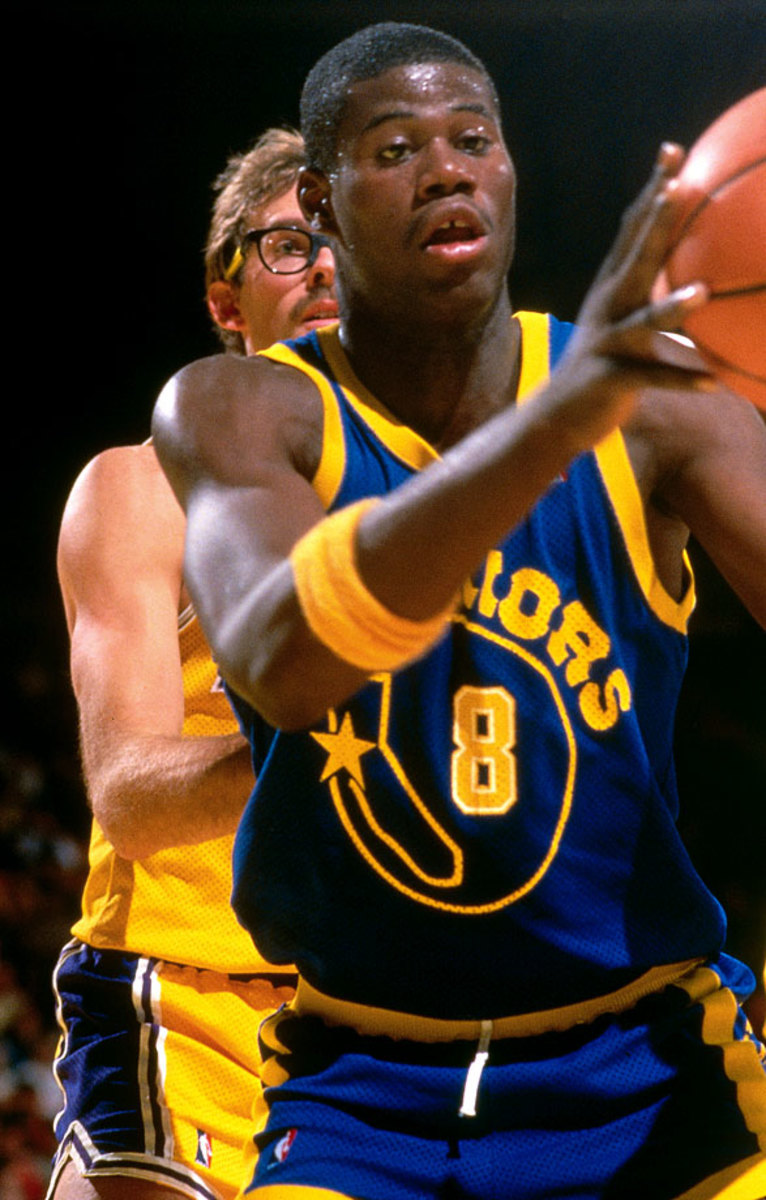
The North Carolina State product totaled 222 points in 72 career games, as good a representative as any for a draft full of busts.
Jon Koncak, Hawks | No. 5 pick and Joe Kleine, Kings | No. 6 pick, 1985
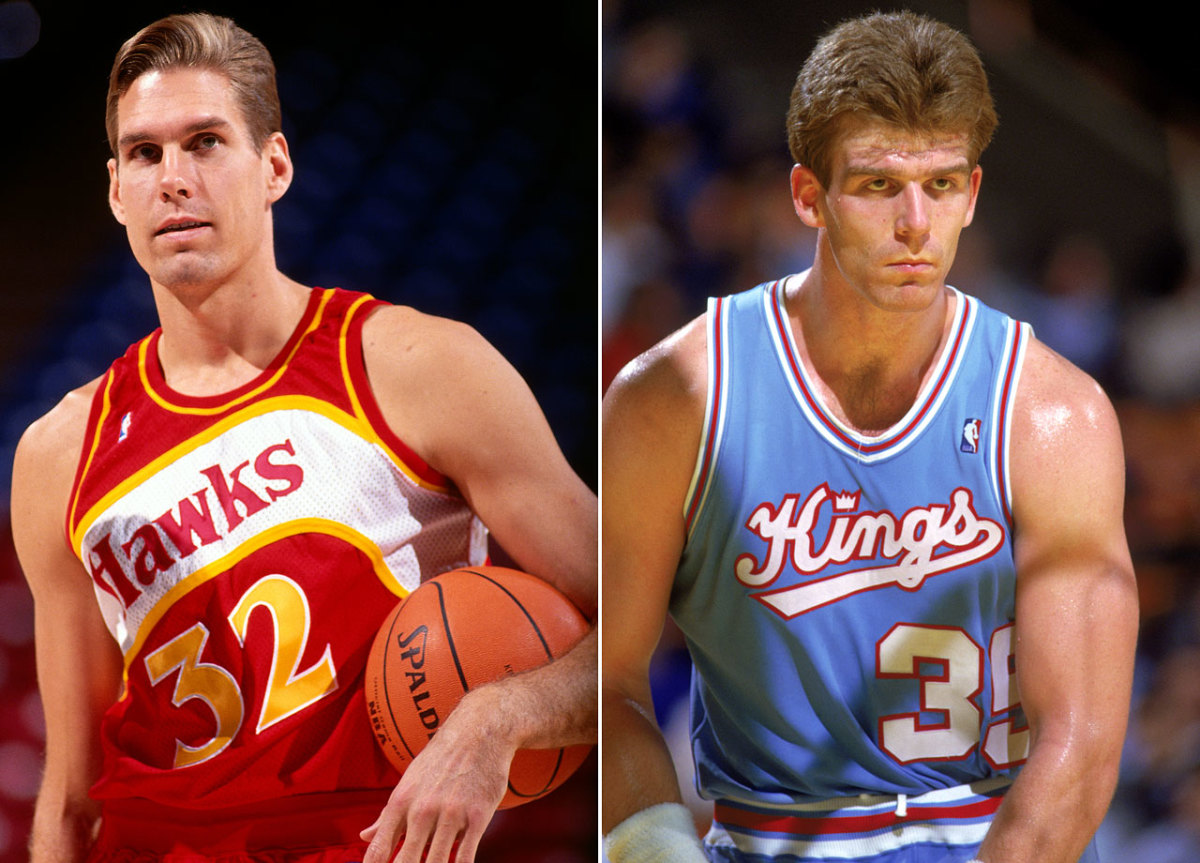
Koncak and Klein spent the bulk of their time in the NBA cashing in on their right to commit six fouls per game.
Sam Bowie, Trail Blazers | No. 2 pick, 1984
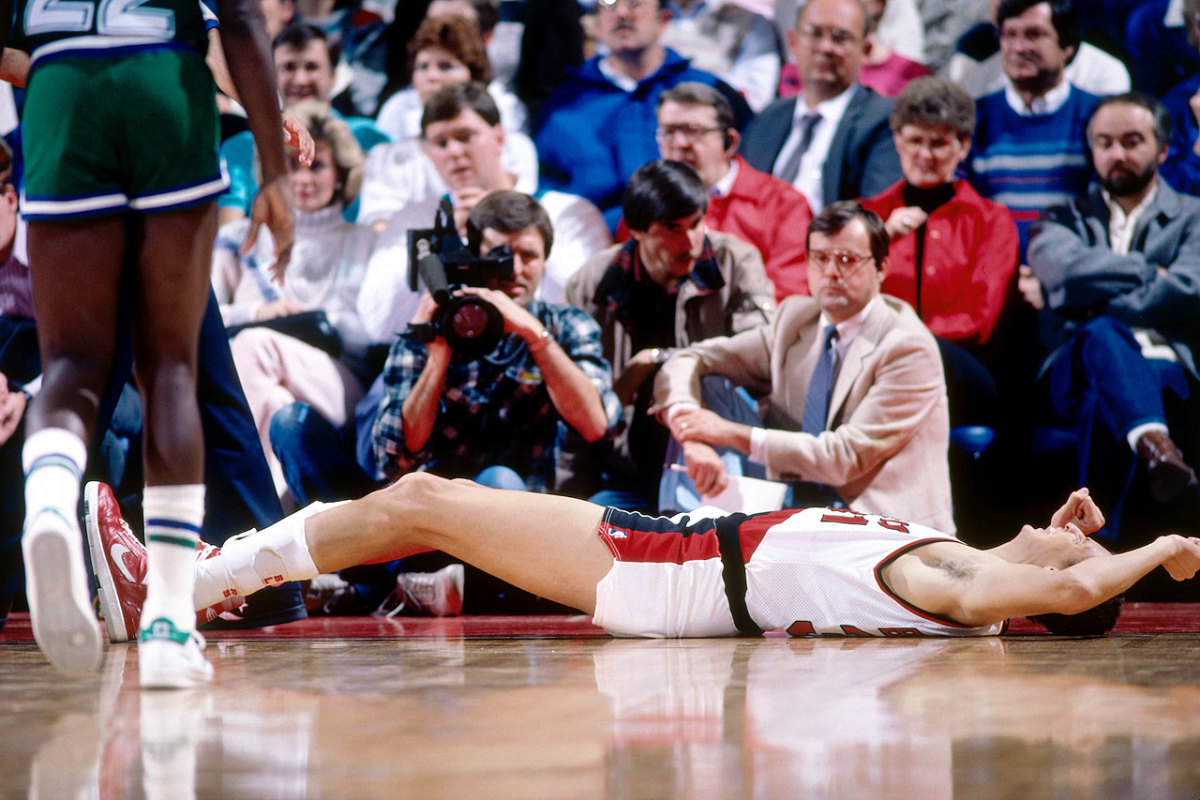
His selection underscores the cardinal rule behind NBA Draftology: You can't draft for need. The Blazers, flush with Jim Paxson and Clyde Drexler on the wings, needed a center and passed on drafting Michael Jordan, Charles Barkley and John Stockton. Bowie struggled with injuries throughout his 10-year run and finished with career averages of 10.9 points and 7.5 rebounds.
Bill Garnett, Mavericks | No. 4 pick, 1982
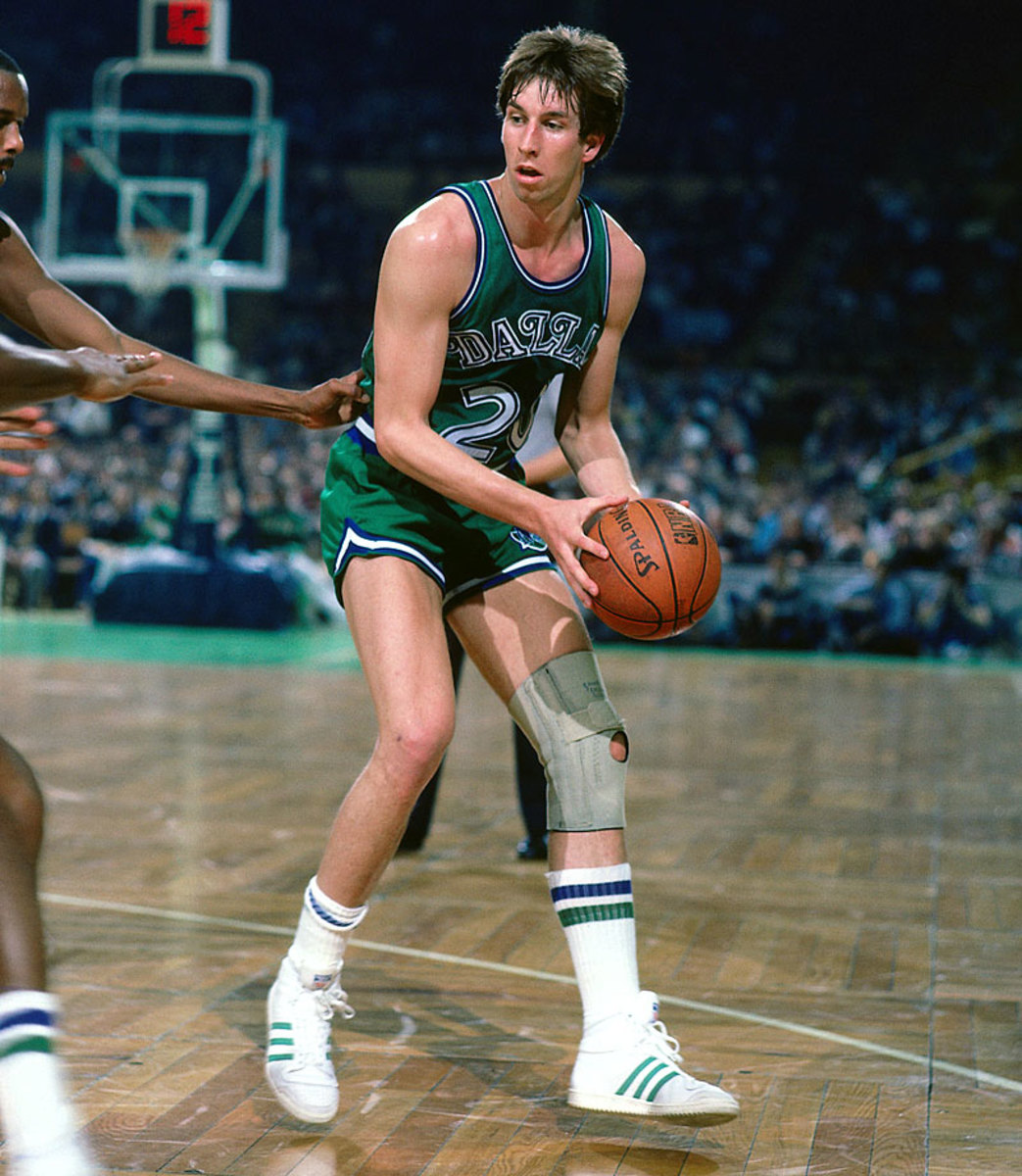
The former Wyoming star split four pedestrian seasons (5.5 points, 4.3 rebounds) between Dallas and Indiana.
Kent Benson, Bucks | No. 1 pick, 1977
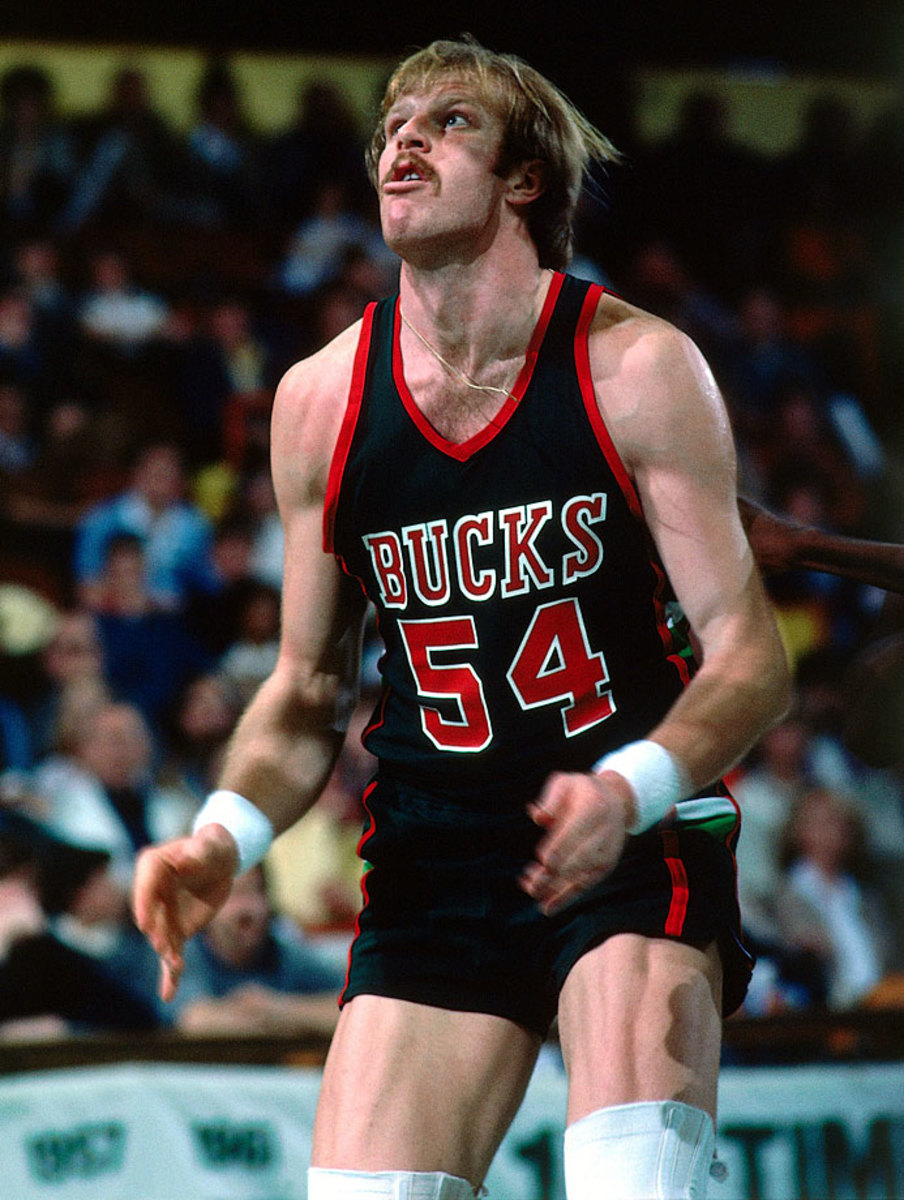
It never got better for Benson than winning the national title at Indiana. He did stick in the NBA for 10 seasons but produced only three double-digit scoring campaigns.
LaRue Martin, Trail Blazers | No. 1 pick, 1972
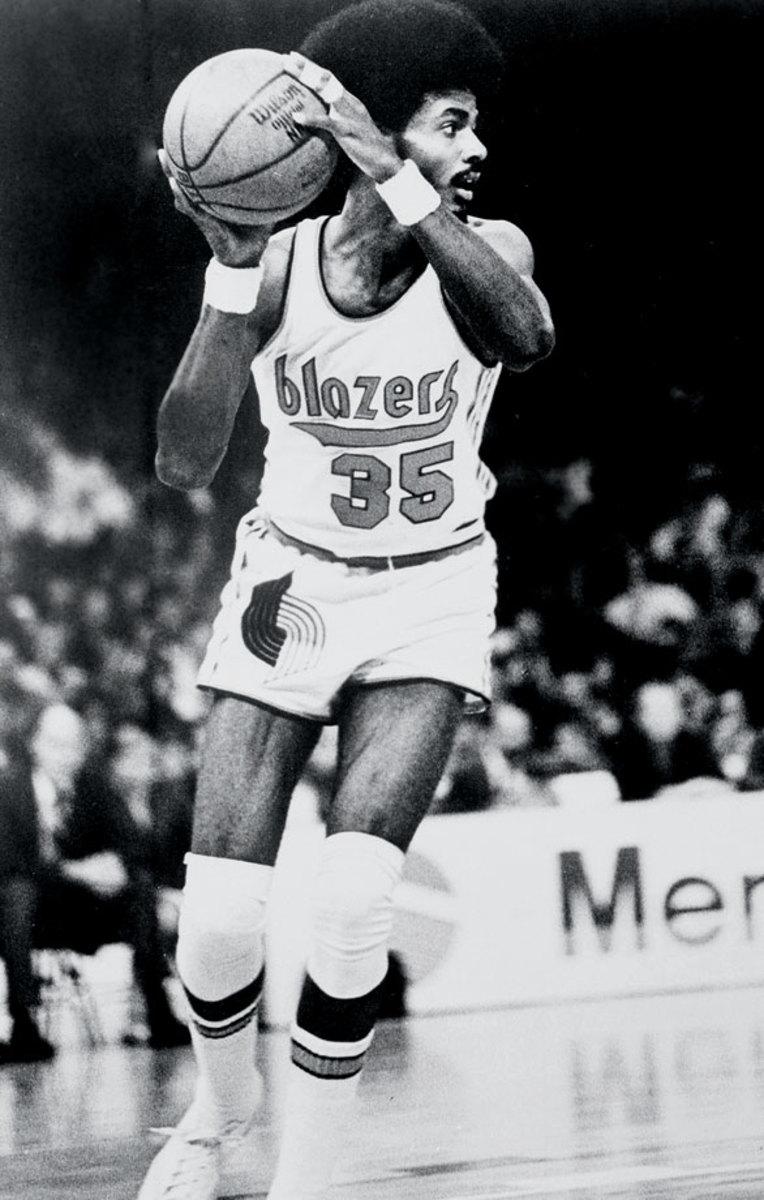
Portland passed on future Hall of Famer Bob McAdoo to take fellow big man Martin, who never averaged more than seven points in his four NBA seasons. The Loyola product retired in 1976, a year before the Blazers won their first and only championship.
Ken Durrett, Cincinnati Royals | No. 4 pick, 1971
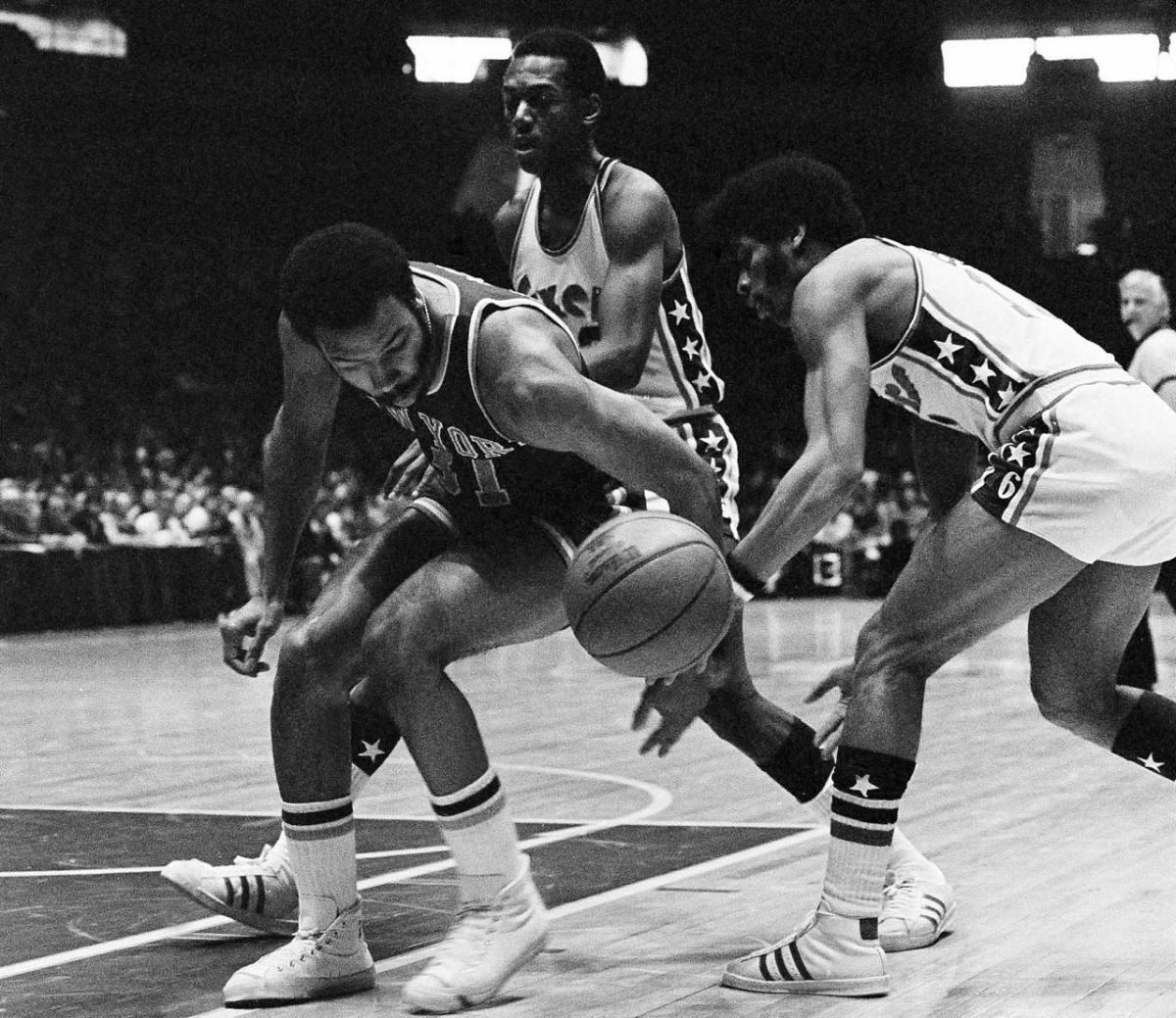
Durrett (pictured in the background, with the 76ers)) had more fouls (197) than field goals (192) in his four-year career, during which he averaged 10 minutes a game and never started.
